13.5 Research Process: Making Notes, Synthesizing Information, and Keeping a Research Log
Learning outcomes.
By the end of this section, you will be able to:
- Employ the methods and technologies commonly used for research and communication within various fields.
- Practice and apply strategies such as interpretation, synthesis, response, and critique to compose texts that integrate the writer’s ideas with those from appropriate sources.
- Analyze and make informed decisions about intellectual property based on the concepts that motivate them.
- Apply citation conventions systematically.
As you conduct research, you will work with a range of “texts” in various forms, including sources and documents from online databases as well as images, audio, and video files from the Internet. You may also work with archival materials and with transcribed and analyzed primary data. Additionally, you will be taking notes and recording quotations from secondary sources as you find materials that shape your understanding of your topic and, at the same time, provide you with facts and perspectives. You also may download articles as PDFs that you then annotate. Like many other students, you may find it challenging to keep so much material organized, accessible, and easy to work with while you write a major research paper. As it does for many of those students, a research log for your ideas and sources will help you keep track of the scope, purpose, and possibilities of any research project.
A research log is essentially a journal in which you collect information, ask questions, and monitor the results. Even if you are completing the annotated bibliography for Writing Process: Informing and Analyzing , keeping a research log is an effective organizational tool. Like Lily Tran’s research log entry, most entries have three parts: a part for notes on secondary sources, a part for connections to the thesis or main points, and a part for your own notes or questions. Record source notes by date, and allow room to add cross-references to other entries.

Summary of Assignment: Research Log
Your assignment is to create a research log similar to the student model. You will use it for the argumentative research project assigned in Writing Process: Integrating Research to record all secondary source information: your notes, complete publication data, relation to thesis, and other information as indicated in the right-hand column of the sample entry.
Another Lens. A somewhat different approach to maintaining a research log is to customize it to your needs or preferences. You can apply shading or color coding to headers, rows, and/or columns in the three-column format (for colors and shading). Or you can add columns to accommodate more information, analysis, synthesis, or commentary, formatting them as you wish. Consider adding a column for questions only or one for connections to other sources. Finally, consider a different visual format , such as one without columns. Another possibility is to record some of your comments and questions so that you have an aural rather than a written record of these.
Writing Center
At this point, or at any other point during the research and writing process, you may find that your school’s writing center can provide extensive assistance. If you are unfamiliar with the writing center, now is a good time to pay your first visit. Writing centers provide free peer tutoring for all types and phases of writing. Discussing your research with a trained writing center tutor can help you clarify, analyze, and connect ideas as well as provide feedback on works in progress.
Quick Launch: Beginning Questions
You may begin your research log with some open pages in which you freewrite, exploring answers to the following questions. Although you generally would do this at the beginning, it is a process to which you likely will return as you find more information about your topic and as your focus changes, as it may during the course of your research.
- What information have I found so far?
- What do I still need to find?
- Where am I most likely to find it?
These are beginning questions. Like Lily Tran, however, you will come across general questions or issues that a quick note or freewrite may help you resolve. The key to this section is to revisit it regularly. Written answers to these and other self-generated questions in your log clarify your tasks as you go along, helping you articulate ideas and examine supporting evidence critically. As you move further into the process, consider answering the following questions in your freewrite:
- What evidence looks as though it best supports my thesis?
- What evidence challenges my working thesis?
- How is my thesis changing from where it started?
Creating the Research Log
As you gather source material for your argumentative research paper, keep in mind that the research is intended to support original thinking. That is, you are not writing an informational report in which you simply supply facts to readers. Instead, you are writing to support a thesis that shows original thinking, and you are collecting and incorporating research into your paper to support that thinking. Therefore, a research log, whether digital or handwritten, is a great way to keep track of your thinking as well as your notes and bibliographic information.
In the model below, Lily Tran records the correct MLA bibliographic citation for the source. Then, she records a note and includes the in-text citation here to avoid having to retrieve this information later. Perhaps most important, Tran records why she noted this information—how it supports her thesis: The human race must turn to sustainable food systems that provide healthy diets with minimal environmental impact, starting now . Finally, she makes a note to herself about an additional visual to include in the final paper to reinforce the point regarding the current pressure on food systems. And she connects the information to other information she finds, thus cross-referencing and establishing a possible synthesis. Use a format similar to that in Table 13.4 to begin your own research log.
Types of Research Notes
Taking good notes will make the research process easier by enabling you to locate and remember sources and use them effectively. While some research projects requiring only a few sources may seem easily tracked, research projects requiring more than a few sources are more effectively managed when you take good bibliographic and informational notes. As you gather evidence for your argumentative research paper, follow the descriptions and the electronic model to record your notes. You can combine these with your research log, or you can use the research log for secondary sources and your own note-taking system for primary sources if a division of this kind is helpful. Either way, be sure to include all necessary information.
Bibliographic Notes
These identify the source you are using. When you locate a useful source, record the information necessary to find that source again. It is important to do this as you find each source, even before taking notes from it. If you create bibliographic notes as you go along, then you can easily arrange them in alphabetical order later to prepare the reference list required at the end of formal academic papers. If your instructor requires you to use MLA formatting for your essay, be sure to record the following information:
- Title of source
- Title of container (larger work in which source is included)
- Other contributors
- Publication date
When using MLA style with online sources, also record the following information:
- Date of original publication
- Date of access
- DOI (A DOI, or digital object identifier, is a series of digits and letters that leads to the location of an online source. Articles in journals are often assigned DOIs to ensure that the source can be located, even if the URL changes. If your source is listed with a DOI, use that instead of a URL.)
It is important to understand which documentation style your instructor will require you to use. Check the Handbook for MLA Documentation and Format and APA Documentation and Format styles . In addition, you can check the style guide information provided by the Purdue Online Writing Lab .
Informational Notes
These notes record the relevant information found in your sources. When writing your essay, you will work from these notes, so be sure they contain all the information you need from every source you intend to use. Also try to focus your notes on your research question so that their relevance is clear when you read them later. To avoid confusion, work with separate entries for each piece of information recorded. At the top of each entry, identify the source through brief bibliographic identification (author and title), and note the page numbers on which the information appears. Also helpful is to add personal notes, including ideas for possible use of the information or cross-references to other information. As noted in Writing Process: Integrating Research , you will be using a variety of formats when borrowing from sources. Below is a quick review of these formats in terms of note-taking processes. By clarifying whether you are quoting directly, paraphrasing, or summarizing during these stages, you can record information accurately and thus take steps to avoid plagiarism.
Direct Quotations, Paraphrases, and Summaries
A direct quotation is an exact duplication of the author’s words as they appear in the original source. In your notes, put quotation marks around direct quotations so that you remember these words are the author’s, not yours. One advantage of copying exact quotations is that it allows you to decide later whether to include a quotation, paraphrase, or summary. ln general, though, use direct quotations only when the author’s words are particularly lively or persuasive.
A paraphrase is a restatement of the author’s words in your own words. Paraphrase to simplify or clarify the original author’s point. In your notes, use paraphrases when you need to record details but not exact words.
A summary is a brief condensation or distillation of the main point and most important details of the original source. Write a summary in your own words, with facts and ideas accurately represented. A summary is useful when specific details in the source are unimportant or irrelevant to your research question. You may find you can summarize several paragraphs or even an entire article or chapter in just a few sentences without losing useful information. It is a good idea to note when your entry contains a summary to remind you later that it omits detailed information. See Writing Process Integrating Research for more detailed information and examples of quotations, paraphrases, and summaries and when to use them.
Other Systems for Organizing Research Logs and Digital Note-Taking
Students often become frustrated and at times overwhelmed by the quantity of materials to be managed in the research process. If this is your first time working with both primary and secondary sources, finding ways to keep all of the information in one place and well organized is essential.
Because gathering primary evidence may be a relatively new practice, this section is designed to help you navigate the process. As mentioned earlier, information gathered in fieldwork is not cataloged, organized, indexed, or shelved for your convenience. Obtaining it requires diligence, energy, and planning. Online resources can assist you with keeping a research log. Your college library may have subscriptions to tools such as Todoist or EndNote. Consult with a librarian to find out whether you have access to any of these. If not, use something like the template shown in Figure 13.8 , or another like it, as a template for creating your own research notes and organizational tool. You will need to have a record of all field research data as well as the research log for all secondary sources.
As an Amazon Associate we earn from qualifying purchases.
This book may not be used in the training of large language models or otherwise be ingested into large language models or generative AI offerings without OpenStax's permission.
Want to cite, share, or modify this book? This book uses the Creative Commons Attribution License and you must attribute OpenStax.
Access for free at https://openstax.org/books/writing-guide/pages/1-unit-introduction
- Authors: Michelle Bachelor Robinson, Maria Jerskey, featuring Toby Fulwiler
- Publisher/website: OpenStax
- Book title: Writing Guide with Handbook
- Publication date: Dec 21, 2021
- Location: Houston, Texas
- Book URL: https://openstax.org/books/writing-guide/pages/1-unit-introduction
- Section URL: https://openstax.org/books/writing-guide/pages/13-5-research-process-making-notes-synthesizing-information-and-keeping-a-research-log
© Dec 19, 2023 OpenStax. Textbook content produced by OpenStax is licensed under a Creative Commons Attribution License . The OpenStax name, OpenStax logo, OpenStax book covers, OpenStax CNX name, and OpenStax CNX logo are not subject to the Creative Commons license and may not be reproduced without the prior and express written consent of Rice University.
Research note

- Extensions or updates to previously published research
- The reporting of additional controls
- Short descriptions of research projects that did not provide publishable results but represent valuable information regarding protocol and data collection
- Additions to established (software) tools and experimental or computational methods, e.g. new functionality of user interface, improvements in performance or the release on a new platform
- Replication studies
- Null results
- Data management plans
Authors must clearly acknowledge any work upon which they are building, both published and unpublished.
Manuscripts reporting results of a clinical trial must conform to CONSORT 2010 guidelines. Authors of randomized controlled trials should submit a completed CONSORT checklist alongside their manuscript, available at www.consort-statement.org .
Please note that pooled analyses of selected published research and bibliometric analyses will not be considered. Studies reporting descriptive results from a single institution or region will only be considered if analogous data have not been previously published in a peer reviewed journal and the conclusions provide distinct insights that are of relevance to a regional or international audience.
BMC Research Notes does not consider systematic reviews or meta-analyses. These should be published as full research articles in one of our BMC Series sister journals. Additional criteria apply if your manuscript describes a software tool or data management plan. Please click on the respective link below to view these. These manuscripts should be submitted as a research note.
- Data management plan
Image integrity and standards Cropped gels and blots can be included in the main text if it improves the clarity and conciseness of the presentation. In such cases, the cropping of the blot must be clearly evident and must be mentioned in the figure legend. Corresponding uncropped full-length gels and blot must be included in the supplementary files. These uncropped images should indicate where they were cropped, be labelled as in the main text and placed in a single supplementary figure. The manuscript's figure legends should state that 'Full-length blots/gels are presented in Supplementary Figure X'. Further information can be found under 'Digital image integrity' which are detailed on our Standards of Reporting page.
Data sharing BMC Research Notes strongly supports open research, including transparency and openness in reporting. Further details of our Data availability policy can be found on the journal's About page.
BMC Research Notes strongly encourages that all datasets on which the conclusions of the paper rely should be available to readers. We encourage authors to ensure that their datasets are either deposited in publicly available repositories (where available and appropriate) or presented in the main manuscript or additional supporting files whenever possible. Please see Springer Nature’s data repository guidance . Where a widely established research community expectation for data archiving in public repositories exists, submission to a community-endorsed, public repository is mandatory. A list of data where deposition is required, with the appropriate repositories, can be found on the Editorial Policies Page .
Authors who need help depositing data may wish to contact our Research Data Support Helpdesk . The use of the service is optional and does not imply or guarantee that a manuscript will be accepted.
Preparing your manuscript
The information below details the section headings that you should include in your manuscript and the information required within each section. For a one-page summary of what a research note article should look like, please click here .
Please ensure you adhere to the word limits for research notes:
- Abstract: 200 words
- Introduction, main text and limitations together: 2000 words
List of abbreviation, declarations, references, figures, figure headings, figure legends, tables, table headings and table legends do not count towards the above stated word limits.
Please note that your manuscript must include a ‘Declarations’ section including all of the subheadings (please see below for more information). For all research involving human subjects, written informed consent to participate in the study must be obtained from participants (or their parent or legal guardian in the case of children under 16). BMC Research Notes does not consider research where only verbal informed consent has been obtained.
Please limit the number of tables and figures in your manuscript to 3 in order to be consistent with a note article type. Additional figures and/or tables can be included as supplementary files.
The title page should:
- Present a title that includes a clear description of what the manuscript reports
- If a collaboration group should be listed as an author, please list the group name as an author. If you would like the names of the individual members of the group to be searchable through their individual PubMed records, please include this information in the “Acknowledgements” section in accordance with the instructions below
- Indicate the corresponding author
The abstract should not exceed 200 words. Please minimize the use of abbreviations and do not cite references in the abstract. The abstract must include the following separate sections:
- Objective: The purpose and objective of the research presented.
- Results: A brief summary of the main findings.
If the data presented is a single observation or the side product of another research project then authors should state this in the abstract under objective.
Professionally produced Visual Abstracts BMC Research Notes will consider visual abstracts. As an author submitting to the journal, you may wish to make use of services provided at Springer Nature for high quality and affordable visual abstracts where you are entitled to a 20% discount. Click here to find out more about the service, and your discount will be automatically be applied when using this link.
Three to ten keywords representing the main content of the article.
Introduction
The introduction should be brief and provide the motivation/objective for the work presented in the manuscript, e.g.
- Where does the data come from?
- Why was the data obtained?
If the data presented is a single observation or the side product of another research project then authors should state this in the introduction. This will not negatively impact editorial assessment as BMC Research Notes aims to make single observations available to the scientific community.
We are not looking for a detailed and lengthy introduction to the topic and authors should instead cite relevant review articles. Authors should not provide a general review of the related literature but instead cite relevant work if the manuscript extends previously published or unpublished research.
For data management plans, the introduction should briefly summarize the research project for which the data management plan was written.
This should contain the body of the research note, and may also be broken into subsections with short and informative headings. Methods should be described in sufficient detail to allow repeatability. Authors should concisely describe the data or results they present and provide a critical discussion of the findings within the context of the research field. If an observation cannot be explained or put in context of the current literature then authors are encouraged to state that.
Limitations
BMC Research Notes considers scientifically valid manuscripts irrespective of the interest of a study or its likely impact. In order to ensure submissions to BMC Research Notes are of maximum benefit to the research community, authors should clearly state the limitations of their work.
Introduction, main text and limitations together must not exceed 2000 words.
List of abbreviations
If abbreviations are used in the text they should be defined in the text at first use, and a list of abbreviations should be provided.
Declarations
All manuscripts must contain the following sections under the heading 'Declarations':
Ethics approval and consent to participate
Consent for publication, availability of data and materials, competing interests, authors' contributions, acknowledgements.
- Authors' information (optional)
Please see below for details on the information to be included in these sections.
If any of the sections are not relevant to your manuscript, please include the heading and write 'Not applicable' for that section.
Manuscripts reporting studies involving human participants, human data or human tissue must:
- include a statement on ethics approval and consent (even where the need for approval was waived)
- include the name of the ethics committee that approved the study and the committee’s reference number if appropriate
Studies involving animals must include a statement on ethics approval and for experimental studies involving client-owned animals, authors must also include a statement on informed consent from the client or owner.
See our editorial policies for more information.
If your manuscript does not report on or involve the use of any animal or human data or tissue, please state “Not applicable” in this section.
If your manuscript contains any individual person’s data in any form (including any individual details, images or videos), consent for publication must be obtained from that person, or in the case of children, their parent or legal guardian. All presentations of case reports must have consent for publication.
You can use your institutional consent form or our consent form if you prefer. You should not send the form to us on submission, but we may request to see a copy at any stage (including after publication).
See our editorial policies for more information on consent for publication.
If your manuscript does not contain data from any individual person, please state “Not applicable” in this section.
All manuscripts must include an ‘Availability of data and materials’ statement. Data availability statements should include information on where data supporting the results reported in the article can be found including, where applicable, hyperlinks to publicly archived datasets analysed or generated during the study. By data we mean the minimal dataset that would be necessary to interpret, replicate and build upon the findings reported in the article. We recognise it is not always possible to share research data publicly, for instance when individual privacy could be compromised, and in such instances data availability should still be stated in the manuscript along with any conditions for access.
Authors are also encouraged to preserve search strings on searchRxiv https://searchrxiv.org/ , an archive to support researchers to report, store and share their searches consistently and to enable them to review and re-use existing searches. searchRxiv enables researchers to obtain a digital object identifier (DOI) for their search, allowing it to be cited.
Data availability statements can take one of the following forms (or a combination of more than one if required for multiple datasets):
- The datasets generated and/or analysed during the current study are available in the [NAME] repository, [PERSISTENT WEB LINK TO DATASETS]
- The datasets used and/or analysed during the current study are available from the corresponding author on reasonable request.
- All data generated or analysed during this study are included in this published article [and its supplementary information files].
- The datasets generated and/or analysed during the current study are not publicly available due [REASON WHY DATA ARE NOT PUBLIC] but are available from the corresponding author on reasonable request.
- Data sharing is not applicable to this article as no datasets were generated or analysed during the current study.
- The data that support the findings of this study are available from [third party name] but restrictions apply to the availability of these data, which were used under license for the current study, and so are not publicly available. Data are however available from the authors upon reasonable request and with permission of [third party name].
- Not applicable. If your manuscript does not contain any data, please state 'Not applicable' in this section.
More examples of template data availability statements, which include examples of openly available and restricted access datasets, are available here .
BioMed Central strongly encourages the citation of any publicly available data on which the conclusions of the paper rely in the manuscript. Data citations should include a persistent identifier (such as a DOI) and should ideally be included in the reference list. Citations of datasets, when they appear in the reference list, should include the minimum information recommended by DataCite and follow journal style. Dataset identifiers including DOIs should be expressed as full URLs. For example:
Hao Z, AghaKouchak A, Nakhjiri N, Farahmand A. Global integrated drought monitoring and prediction system (GIDMaPS) data sets. figshare. 2014. http://dx.doi.org/10.6084/m9.figshare.853801
With the corresponding text in the Availability of data and materials statement:
The datasets generated during and/or analysed during the current study are available in the [NAME] repository, [PERSISTENT WEB LINK TO DATASETS]. [Reference number]
If you wish to co-submit a data note describing your data to be published in BMC Research Notes , you can do so by visiting our submission portal . Data notes support open data and help authors to comply with funder policies on data sharing. Co-published data notes will be linked to the research article the data support ( example ).
All financial and non-financial competing interests must be declared in this section.
See our editorial policies for a full explanation of competing interests. If you are unsure whether you or any of your co-authors have a competing interest please contact the editorial office.
Please use the authors initials to refer to each authors' competing interests in this section.
If you do not have any competing interests, please state "The authors declare that they have no competing interests" in this section.
All sources of funding for the research reported should be declared. If the funder has a specific role in the conceptualization, design, data collection, analysis, decision to publish, or preparation of the manuscript, this should be declared.
The individual contributions of authors to the manuscript should be specified in this section. Guidance and criteria for authorship can be found in our editorial policies .
Please use initials to refer to each author's contribution in this section, for example: "FC analyzed and interpreted the patient data regarding the hematological disease and the transplant. RH performed the histological examination of the kidney, and was a major contributor in writing the manuscript. All authors read and approved the final manuscript."
Please acknowledge anyone who contributed towards the article who does not meet the criteria for authorship including anyone who provided professional writing services or materials.
Authors should obtain permission to acknowledge from all those mentioned in the Acknowledgements section.
See our editorial policies for a full explanation of acknowledgements and authorship criteria.
If you do not have anyone to acknowledge, please write "Not applicable" in this section.
Group authorship (for manuscripts involving a collaboration group): if you would like the names of the individual members of a collaboration Group to be searchable through their individual PubMed records, please ensure that the title of the collaboration Group is included on the title page and in the submission system and also include collaborating author names as the last paragraph of the “Acknowledgements” section. Please add authors in the format First Name, Middle initial(s) (optional), Last Name. You can add institution or country information for each author if you wish, but this should be consistent across all authors.
Please note that individual names may not be present in the PubMed record at the time a published article is initially included in PubMed as it takes PubMed additional time to code this information.
Authors' information
This section is optional.
You may choose to use this section to include any relevant information about the author(s) that may aid the reader's interpretation of the article, and understand the standpoint of the author(s). This may include details about the authors' qualifications, current positions they hold at institutions or societies, or any other relevant background information. Please refer to authors using their initials. Note this section should not be used to describe any competing interests.
Footnotes can be used to give additional information, which may include the citation of a reference included in the reference list. They should not consist solely of a reference citation, and they should never include the bibliographic details of a reference. They should also not contain any figures or tables.
Footnotes to the text are numbered consecutively; those to tables should be indicated by superscript lower-case letters (or asterisks for significance values and other statistical data). Footnotes to the title or the authors of the article are not given reference symbols.
Always use footnotes instead of endnotes.
Examples of the Vancouver reference style are shown below.
See our editorial policies for author guidance on good citation practice
Web links and URLs: All web links and URLs, including links to the authors' own websites, should be given a reference number and included in the reference list rather than within the text of the manuscript. They should be provided in full, including both the title of the site and the URL, as well as the date the site was accessed, in the following format: The Mouse Tumor Biology Database. http://tumor.informatics.jax.org/mtbwi/index.do . Accessed 20 May 2013. If an author or group of authors can clearly be associated with a web link, such as for weblogs, then they should be included in the reference.
Example reference style:
Article within a journal
Smith JJ. The world of science. Am J Sci. 1999;36:234-5.
Article within a journal (no page numbers)
Rohrmann S, Overvad K, Bueno-de-Mesquita HB, Jakobsen MU, Egeberg R, Tjønneland A, et al. Meat consumption and mortality - results from the European Prospective Investigation into Cancer and Nutrition. BMC Medicine. 2013;11:63.
Article within a journal by DOI
Slifka MK, Whitton JL. Clinical implications of dysregulated cytokine production. Dig J Mol Med. 2000; doi:10.1007/s801090000086.
Article within a journal supplement
Frumin AM, Nussbaum J, Esposito M. Functional asplenia: demonstration of splenic activity by bone marrow scan. Blood 1979;59 Suppl 1:26-32.
Book chapter, or an article within a book
Wyllie AH, Kerr JFR, Currie AR. Cell death: the significance of apoptosis. In: Bourne GH, Danielli JF, Jeon KW, editors. International review of cytology. London: Academic; 1980. p. 251-306.
OnlineFirst chapter in a series (without a volume designation but with a DOI)
Saito Y, Hyuga H. Rate equation approaches to amplification of enantiomeric excess and chiral symmetry breaking. Top Curr Chem. 2007. doi:10.1007/128_2006_108.
Complete book, authored
Blenkinsopp A, Paxton P. Symptoms in the pharmacy: a guide to the management of common illness. 3rd ed. Oxford: Blackwell Science; 1998.
Online document
Doe J. Title of subordinate document. In: The dictionary of substances and their effects. Royal Society of Chemistry. 1999. http://www.rsc.org/dose/title of subordinate document. Accessed 15 Jan 1999.
Online database
Healthwise Knowledgebase. US Pharmacopeia, Rockville. 1998. http://www.healthwise.org. Accessed 21 Sept 1998.
Supplementary material/private homepage
Doe J. Title of supplementary material. 2000. http://www.privatehomepage.com. Accessed 22 Feb 2000.
University site
Doe, J: Title of preprint. http://www.uni-heidelberg.de/mydata.html (1999). Accessed 25 Dec 1999.
Doe, J: Trivial HTTP, RFC2169. ftp://ftp.isi.edu/in-notes/rfc2169.txt (1999). Accessed 12 Nov 1999.
Organization site
ISSN International Centre: The ISSN register. http://www.issn.org (2006). Accessed 20 Feb 2007.
Dataset with persistent identifier
Zheng L-Y, Guo X-S, He B, Sun L-J, Peng Y, Dong S-S, et al. Genome data from sweet and grain sorghum (Sorghum bicolor). GigaScience Database. 2011. http://dx.doi.org/10.5524/100012 .
Figures, tables and additional files
See General formatting guidelines for information on how to format figures, tables and additional files.
Submit manuscript
Important information
Editorial board
About our article types
For authors
For editorial board members
For reviewers
Annual Journal Metrics
2022 Citation Impact 1.8 - 2-year Impact Factor 4.0 - 5-year Impact Factor 0.869 - SNIP (Source Normalized Impact per Paper) 0.534 - SJR (SCImago Journal Rank)
2023 Speed 20 days submission to first editorial decision for all manuscripts (Median) 191 days submission to accept (Median)
2023 Usage 4,067,459 downloads 2,370 Altmetric mentions
- More about our metrics
- Follow us on Twitter
BMC Research Notes
ISSN: 1756-0500
- Submission enquiries: [email protected]
- General enquiries: [email protected]
Office of Undergraduate Research
- Office of Undergraduate Research FAQ's
- URSA Engage
- Resources for Students
- Resources for Faculty
- Engaging in Research
- Spring Poster Symposium (SPS)
- Ecampus SPS Videos
- Earn Money by Participating in Research Studies
- Transcript Notation
- Student Publications
How to take Research Notes
How to take research notes.
Your research notebook is an important piece of information useful for future projects and presentations. Maintaining organized and legible notes allows your research notebook to be a valuable resource to you and your research group. It allows others and yourself to replicate experiments, and it also serves as a useful troubleshooting tool. Besides it being an important part of the research process, taking detailed notes of your research will help you stay organized and allow you to easily review your work.
Here are some common reasons to maintain organized notes:
- Keeps a record of your goals and thoughts during your research experiments.
- Keeps a record of what worked and what didn't in your research experiments.
- Enables others to use your notes as a guide for similar procedures and techniques.
- A helpful tool to reference when writing a paper, submitting a proposal, or giving a presentation.
- Assists you in answering experimental questions.
- Useful to efficiently share experimental approaches, data, and results with others.
Before taking notes:
- Ask your research professor what note-taking method they recommend or prefer.
- Consider what type of media you'll be using to take notes.
- Once you have decided on how you'll be taking notes, be sure to keep all of your notes in one place to remain organized.
- Plan on taking notes regularly (meetings, important dates, procedures, journal/manuscript revisions, etc.).
- This is useful when applying to programs or internships that ask about your research experience.
Note Taking Tips:
Taking notes by hand:.
- Research notebooks don’t belong to you so make sure your notes are legible for others.
- Use post-it notes or tabs to flag important sections.
- Start sorting your notes early so that you don't become backed up and disorganized.
- Only write with a pen as pencils aren’t permanent & sharpies can bleed through.
- Make it a habit to write in your notebook and not directly on sticky notes or paper towels. Rewriting notes can waste time and sometimes lead to inaccurate data or results.
Taking Notes Electronically
- Make sure your device is charged and backed up to store data.
- Invest in note-taking apps or E-Ink tablets
- Create shortcuts to your folders so you have easier access
- Create outlines.
- Keep your notes short and legible.
Note Taking Tips Continued:
Things to avoid.
- Avoid using pencils or markers that may bleed through.
- Avoid erasing entries. Instead, draw a straight line through any mistakes and write the date next to the crossed-out information.
- Avoid writing in cursive.
- Avoid delaying your entries so you don’t fall behind and forget information.
Formatting Tips
- Use bullet points to condense your notes to make them simpler to access or color-code them.
- Tracking your failures and mistakes can improve your work in the future.
- If possible, take notes as you’re experimenting or make time at the end of each workday to get it done.
- Record the date at the start of every day, including all dates spent on research.
Types of media to use when taking notes:
Traditional paper notebook.
- Pros: Able to take quick notes, convenient access to notes, cheaper option
- Cons: Requires a table of contents or tabs as it is not easily searchable, can get damaged easily, needs to be scanned if making a digital copy
Electronic notebook
- Apple Notes
- Pros: Easily searchable, note-taking apps available, easy to edit & customize
- Cons: Can be difficult to find notes if they are unorganized, not as easy to take quick notes, can be a more expensive option
Combination of both
Contact info.
618 Kerr Administration Building Corvallis, OR 97331
541-737-5105
- USC Libraries
- Research Guides
Organizing Your Social Sciences Research Paper
- Footnotes or Endnotes?
- Purpose of Guide
- Design Flaws to Avoid
- Independent and Dependent Variables
- Glossary of Research Terms
- Reading Research Effectively
- Narrowing a Topic Idea
- Broadening a Topic Idea
- Extending the Timeliness of a Topic Idea
- Academic Writing Style
- Applying Critical Thinking
- Choosing a Title
- Making an Outline
- Paragraph Development
- Research Process Video Series
- Executive Summary
- The C.A.R.S. Model
- Background Information
- The Research Problem/Question
- Theoretical Framework
- Citation Tracking
- Content Alert Services
- Evaluating Sources
- Primary Sources
- Secondary Sources
- Tiertiary Sources
- Scholarly vs. Popular Publications
- Qualitative Methods
- Quantitative Methods
- Insiderness
- Using Non-Textual Elements
- Limitations of the Study
- Common Grammar Mistakes
- Writing Concisely
- Avoiding Plagiarism
- Further Readings
- Generative AI and Writing
- USC Libraries Tutorials and Other Guides
- Bibliography
Endnote Note citing a particular source or making a brief explanatory comment placed at the end of a research paper and arranged sequentially in relation to where the reference appears in the paper.
Footnote Note citing a particular source or making a brief explanatory comment placed at the bottom of a page corresponding to the item cited in the corresponding text above.
Fiske, Robert Hartwell. To the Point: A Dictionary of Concise Writing . New York: W.W. Norton and Company, 2014.
Structure and Writing Style
Advantages of Using Endnotes
- Endnotes are less distracting to the reader and allows the narrative to flow better.
- Endnotes don't clutter up the page.
- As a separate section of a research paper, endnotes allow the reader to read and contemplate all the notes at once.
Disadvantages of Using Endnotes
- If you want to look at the text of a particular endnote, you have to flip to the end of the research paper to find the information.
- Depending on how they are created [i.e., continuous numbering or numbers that start over for each chapter], you may have to remember the chapter number as well as the endnote number in order to find the correct one.
- Endnotes may carry a negative connotation much like the proverbial "fine print" or hidden disclaimers in advertising. A reader may believe you are trying to hide something by burying it in a hard-to-find endnote.
Advantages of Using Footnotes
- Readers interested in identifying the source or note can quickly glance down the page to find what they are looking for.
- It allows the reader to immediately link the footnote to the subject of the text without having to take the time to find the note at the back of the paper.
- Footnotes are automatically included when printing off specific pages.
Disadvantages of Using Footnotes
- Footnotes can clutter up the page and, thus, negatively impact the overall look of the page.
- If there are multiple columns, charts, or tables below only a small segment of text that includes a footnote, then you must decide where the footnotes should appear.
- If the footnotes are lengthy, there's a risk they could dominate the page, although this issue is considered acceptable in legal scholarship.
- Adding lengthy footnotes after the paper has been completed can alter the page where other sources are located [i.e., a long footnote can push text to the next page].
- It is more difficult learning how to insert footnotes using your word processing program than simply adding endnotes at the end of your paper.
Things to keep in mind when considering using either endnotes or footnotes in your research paper :
1. Footnotes are numbered consecutively throughout a research paper, except for those notes accompanying special material (e.g., figures, tables, charts, etc.). Numbering of footnotes are "superscript"--Arabic numbers typed slightly above the line of text. Do not include periods, parentheses, or slashes. They can follow all punctuation marks except dashes. In general, to avoid interrupting the continuity of the text, footnote numbers are placed at the end of the sentence, clause, or phrase containing the quoted or paraphrased material. 2. Depending on the writing style used in your class, endnotes may take the place of a list of resources cited in your paper or they may represent non-bibliographic items, such as comments or observations, followed by a separate list of references to the sources you cited and arranged alphabetically by the author's last name. If you are unsure about how to use endnotes, consult with your professor. 3. In general, the use of footnotes in most academic writing is now considered a bit outdated and has been replaced by endnotes, which are much easier to place in your paper, even with the advent of word processing programs. However, some disciplines, such as law and history, still predominantly utilize footnotes. Consult with your professor about which form to use and always remember that, whichever style of citation you choose, apply it consistently throughout your paper.
NOTE: Always think critically about the information you place in a footnote or endnote. Ask yourself, is this supplementary or tangential information that would otherwise disrupt the narrative flow of the text or is this essential information that I should integrate into the main text? If you are not sure, it's better to work it into the text. Too many notes implies a disorganized paper.
Cermak, Bonni and Jennifer Troxell. A Guide to Footnotes and Endnotes for NASA History Authors . NASA History Program. History Division; Hale, Ali. Should You Use Footnotes or Endnotes? DailyWritingTips.com; Tables, Appendices, Footnotes and Endnotes. The Writing Lab and The OWL. Purdue University; Lunsford, Andrea A. and Robert Connors. The St. Martin's Handbook . New York: St. Martin's Press, 1989; Saller, Carol. “Endnotes or Footnotes? Some Considerations.” The Chronicle of Higher Education 58 (January 6, 2012): http://chronicle.com/blogs/linguafranca/2012/01/06/endnotes-or-footnotes-some-considerations/.
- << Previous: Avoiding Plagiarism
- Next: Further Readings >>
- Last Updated: May 20, 2024 9:47 AM
- URL: https://libguides.usc.edu/writingguide

- Cambridge Libraries
Study Skills
Research skills.
- Searching the literature
- Note making for dissertations
- Research Data Management
- Copyright and licenses
- Publishing in journals
- Publishing academic books
- Depositing your thesis
- Research metrics
- Build your online profile
- Finding support
Note making for dissertations: First steps into writing

Note making (as opposed to note taking) is an active practice of recording relevant parts of reading for your research as well as your reflections and critiques of those studies. Note making, therefore, is a pre-writing exercise that helps you to organise your thoughts prior to writing. In this module, we will cover:
- The difference between note taking and note making
- Seven tips for good note making
- Strategies for structuring your notes and asking critical questions
- Different styles of note making
To complete this section, you will need:

- Approximately 20-30 minutes.
- Access to the internet. All the resources used here are available freely.
- Some equipment for jotting down your thoughts, a pen and paper will do, or your phone or another electronic device.
Note taking v note making
When you think about note taking, what comes to mind? Perhaps trying to record everything said in a lecture? Perhaps trying to write down everything included in readings required for a course?
- Note taking is a passive process. When you take notes, you are often trying to record everything that you are reading or listening to. However, you may have noticed that this takes a lot of effort and often results in too many notes to be useful.
- Note making , on the other hand, is an active practice, based on the needs and priorities of your project. Note making is an opportunity for you to ask critical questions of your readings and to synthesise ideas as they pertain to your research questions. Making notes is a pre-writing exercise that develops your academic voice and makes writing significantly easier.
Seven tips for effective note making
Note making is an active process based on the needs of your research. This video contains seven tips to help you make brilliant notes from articles and books to make the most of the time you spend reading and writing.
- Transcript of Seven Tips for Effective Notemaking
Question prompts for strategic note making
You might consider structuring your notes to answer the following questions. Remember that note making is based on your needs, so not all of these questions will apply in all cases. You might try answering these questions using the note making styles discussed in the next section.
- Question prompts for strategic note making
- Background question prompts
- Critical question prompts
- Synthesis question prompts
Answer these six questions to frame your reading and provide context.
- What is the context in which the text was written? What came before it? Are there competing ideas?
- Who is the intended audience?
- What is the author’s purpose?
- How is the writing organised?
- What are the author’s methods?
- What is the author’s key argument and conclusions?
Answer these six questions to determine your critical perspectivess and develop your academic voice.
- What are the most interesting/compelling ideas (to you) in this study?
- Why do you find them interesting? How do they relate to your study?
- What questions do you have about the study?
- What could it cover better? How could it have defended its research better?
- What are the implications of the study? (Look not just to the conclusions but also to definitions and models)
- Are there any gaps in the study? (Look not just at conclusions but definitions, literature review, methodology)
Answer these five questions to compare aspects of various studies (such as for a literature review.
- What are the similarities and differences in the literature?
- Critically analyse the strengths, limitations, debates and themes that emerg from the literature.
- What would you suggest for future research or practice?
- Where are the gaps in the literature? What is missing? Why?
- What new questions should be asked in this area of study?
Styles of note making

- Linear notes . Great for recording thoughts about your readings. [video]
- Mind mapping : Great for thinking through complex topics. [video]
Further sites that discuss techniques for note making:
- Note-taking techniques
- Common note-taking methods
- Strategies for effective note making
Did you know?

How did you find this Research Skills module

Image Credits: Image #1: David Travis on Unsplash ; Image #2: Charles Deluvio on Unsplash
- << Previous: Searching the literature
- Next: Research Data Management >>
- Last Updated: Apr 11, 2024 9:35 AM
- URL: https://libguides.cam.ac.uk/research-skills
© Cambridge University Libraries | Accessibility | Privacy policy | Log into LibApps

Writing a Research Paper: 5. Taking Notes & Documenting Sources
- Getting Started
- 1. Topic Ideas
- 2. Thesis Statement & Outline
- 3. Appropriate Sources
- 4. Search Techniques
- 5. Taking Notes & Documenting Sources
- 6. Evaluating Sources
- 7. Citations & Plagiarism
- 8. Writing Your Research Paper
Taking Notes & Documenting Sources
How to take notes and document sources.
Note taking is a very important part of the research process. It will help you:
- keep your ideas and sources organized
- effectively use the information you find
- avoid plagiarism
When you find good information to be used in your paper:
- Read the text critically, think how it is related to your argument, and decide how you are going to use it in your paper.
- Select the material that is relevant to your argument.
- Copy the original text for direct quotations or briefly summarize the content in your own words, and make note of how you will use it.
- Copy the citation or publication information of the source.
- << Previous: 4. Search Techniques
- Next: 6. Evaluating Sources >>
- Last Updated: Sep 26, 2023 5:26 PM
- URL: https://kenrick.libguides.com/writing-a-research-paper
- Submit your Research
- My Submissions
- Article Guidelines
- Article Guidelines (New Versions)
- Data Guidelines
- Article Processing Charges
- Finding Article Reviewers
- The Peer Review Process
- The Editorial Team’s Role
- Reviewer Criteria
- Dos and Don’ts for Suggesting Reviewers
- Hints and Tips for Finding Reviewers
Guidelines for Article Preparation for Submission
- Data (and Software) Availability
- Reporting Guidelines (if applicable)
- Consent (if applicable)
- Author Contributions
- Competing Interests
- Grant Information
- Acknowledgments (optional)
- Supplementary Material
- Figures and Tables (if applicable)
- Images (if applicable)
- provide full affiliation information (full institutional address and ZIP code, and e-mail address) for all authors, and
- indicate who is/are the corresponding author(s).
- Introduction
- Conclusions/Discussion
- Initial ace validity testing
- Preliminary pilot testing
- Reliability testing (internal consistency, test-retest, inter-rater)
- Any changes implemented resulting from preliminary testing
- Authors should ensure that the terms sex and gender are used correctly throughout the article.
- Title/abstract : it should be clear if the results can only be applied to one sex or gender.
- Introduction : if sex and gender differences are expected in the results, these should be stated.
- if sex and gender differences were taken into consideration for the design of the study these should be stated. If they were not taken into consideration, the rationale should be given.
- explanation of how sex of participants was defined should be stated, either based on self-report, assigned following external or internal examination of body characteristics, or through genetic testing or other means.
- Results : data should be presented disaggregated by sex and gender.
- Discussion : implications of sex and gender differences in the results should be discussed. If sex or gender analysis was not conducted, the rationale should be given.
Repository: Confounding factors considered by studies of vaping as a possible gateway to smoking. https://doi.org/10.5256/repository.4591.d34639.
- Data file 1. (Description of data.)
- Data file 2. (Description of data.)
- Randomized controlled trials ( CONSORT ) and protocols ( SPIRIT )
- Systematic reviews and meta-analyses ( PRISMA ) and protocols ( PRISMA-P )
- Observational studies ( STROBE )
- Case reports ( CARE )
- Qualitative research ( COREQ ; SRQR )
- In vivo animal studies ( ARRIVE )
- Journal abbreviations should follow the Index Medicus/MEDLINE abbreviation approach.
- Preprints can be cited and listed in the reference list.
- Only articles, books and book chapters, datasets and abstracts that have been published or are in press, or are available through public e-print/preprint servers/data repositories, may be cited. Unpublished abstracts, papers that have been submitted to a journal but not yet accepted, and personal communications should instead be included in the text; they should be referred to as ‘personal communications’ or ‘unpublished reports’ and the researchers involved should be named. Authors are responsible for getting permission to quote any personal communications from the cited individuals.
- Web links, URLs, and links to the authors’ own websites should be included as hyperlinks within the main body of the article, and not as references.
- References to trials on a clinical trial database should be as follows: [Authors/name of group], [title of the trial], In: ClinicalTrials.gov [cited year month date], Available from [URL of the link from ClinicalTrials.gov]. Example: Kovacs Foundation, The Effect of Ozone Therapy for Lumbar Herniated Disc. In: ClinicalTrials.gov [cited 2012 Aug 30], Available from http://clinicaltrials.gov/ct2/show/NCT00566007 .
- Datasets published or deposited elsewhere (for example, in figshare, Dryad, etc.) should be listed in the "References" section and the citation to the dataset should follow one of these examples .
Are you a Wellcome-funded researcher?
If you are a previous or current Wellcome grant holder, sign up for information about developments, publishing and publications from Wellcome Open Research.
We'll keep you updated on any major new updates to Wellcome Open Research
The email address should be the one you originally registered with F1000.
You registered with F1000 via Google, so we cannot reset your password.
To sign in, please click here .
If you still need help with your Google account password, please click here .
You registered with F1000 via Facebook, so we cannot reset your password.
If you still need help with your Facebook account password, please click here .
If your email address is registered with us, we will email you instructions to reset your password.
If you think you should have received this email but it has not arrived, please check your spam filters and/or contact for further assistance.
Research Guides
Gould library, reading well and taking research notes.
- How to read for college
- How to take research notes
- How to use sources in your writing
- Tools for note taking and annotations
- Mobile apps for notes and annotations
- Assistive technology
- How to cite your sources
Be Prepared: Keep track of which notes are direct quotes, which are summary, and which are your own thoughts. For example, enclose direct quotes in quotation marks, and enclose your own thoughts in brackets. That way you'll never be confused when you're writing.
Be Clear: Make sure you have noted the source and page number!
Be Organized: Keep your notes organized but in a single place so that you can refer back to notes about other readings at the same time.
Be Consistent: You'll want to find specific notes later, and one way to do that is to be consistent in the way you describe things. If you use consistent terms or tags or keywords, you'll be able to find your way back more easily.
Recording what you find

Take full notes
Whether you take notes on cards, in a notebook, or on the computer, it's vital to record information accurately and completely. Otherwise, you won't be able to trust your own notes. Most importantly, distinguish between (1) direct quotation; (2) paraphrases and summaries of the text; and (3) your own thoughts. On a computer, you have many options for making these distinctions, such as parentheses, brackets, italic or bold text, etc.
Know when to quote, paraphrase, and summarize
- Summarize when you only need to remember the main point of the passage, chapter, etc.
- Paraphrase when you are able to able to clearly state a source's point or meaning in your own words.
- Quote exactly when you need the author's exact words or authority as evidience to back up your claim. You may also want to be sure and use the author's exact wording, either because they stated their point so well, or because you want to refute that point and need to demonstrate you aren't misrepresenting the author's words.
Get the context right
Don't just record the author's words or ideas; be sure and capture the context and meaning that surrounds those ideas as well. It can be easy to take a short quote from an author that completely misrepresents his or her actual intentions if you fail to take the context into account. You should also be sure to note when the author is paraphrasing or summarizing another author's point of view--don't accidentally represent those ideas as the ideas of the author.
Example of reading notes
Here is an example of reading notes taken in Evernote, with citation and page numbers noted as well as quotation marks for direct quotes and brackets around the reader's own thoughts.

- << Previous: How to read for college
- Next: How to use sources in your writing >>
- Last Updated: Feb 7, 2024 12:22 PM
- URL: https://gouldguides.carleton.edu/activereading
Questions? Contact [email protected]

Powered by Springshare.
- Sample Research
FREE 10+ Research Note Samples in MS Word | PDF

Students and researchers need to obtain linguistic skills to use with different types of research concepts. If you’re a student or researcher, whatever the original discipline you studied, you should develop a basic competence in certain subjects in order to be able to write effectively about research methods. Also, having an understanding of the meaning of research terms is useful in your research work. But you also need to write a research note. In this article, we will provide some beneficial tips that you should learn and apply while writing your research note. Plus, we include note samples that you can use. Please continue reading!
Research Note
Free 10+ research note samples, 1. research note template, 2. research note organizer, 3. research note in word template, 4. research note outlines template, 5. self-serving research note, 6. formal research note template, 7. professional research note template, 8. rural research note template, 9. research notes and report, 10. sample research note template, 11. sample research note, what is a research note, how to write a research note , 1. identify your research goals and objectives, 2. select your preferred note-taking methods and strategies, 3. use abbreviations, acronyms, initialism, or phrases, 4. create some sketchnotes or visual notes , what is a research note in a journal, how important is note taking in the research process, what are the 3 types of note-taking, what is the most important part of the note-taking process.
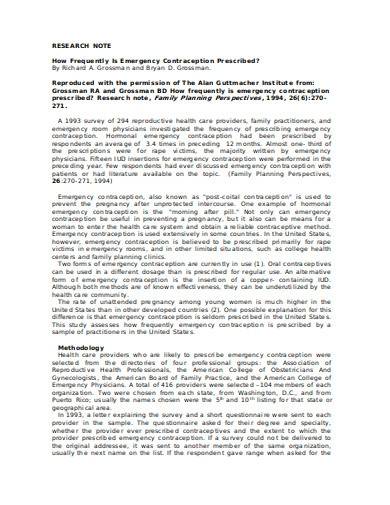
Size: 89 KB
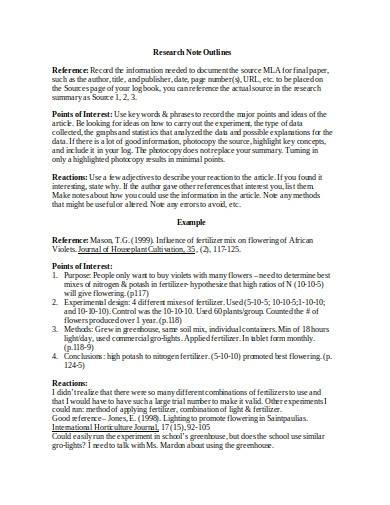
Size: 897 KB
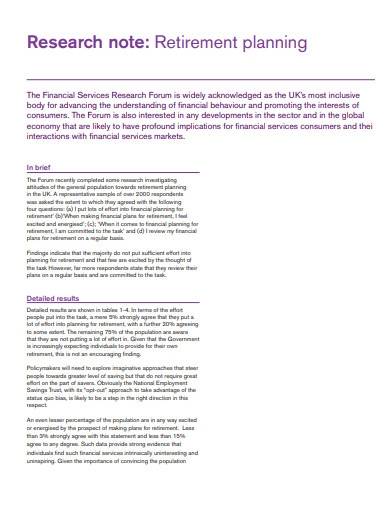
Size: 86 KB
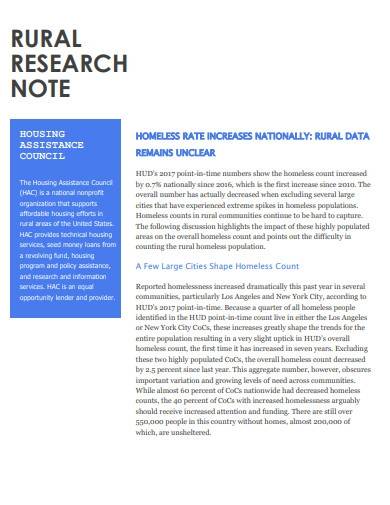
Size: 414 KB
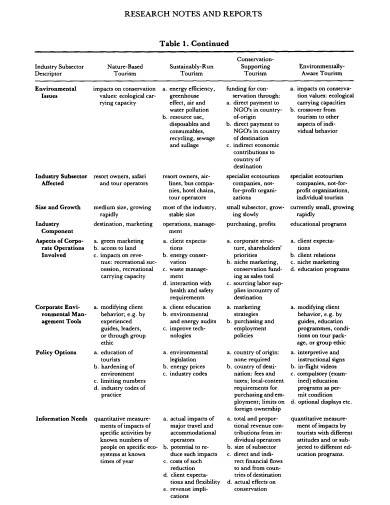
Size: 234 KB
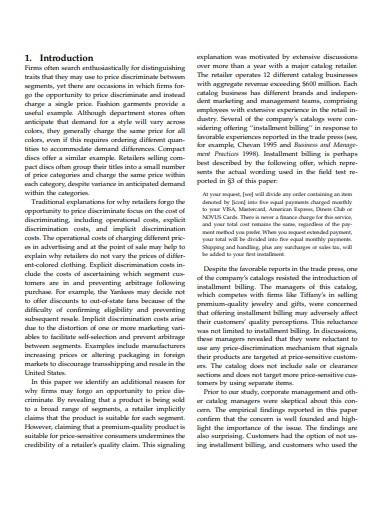
Size: 117 KB
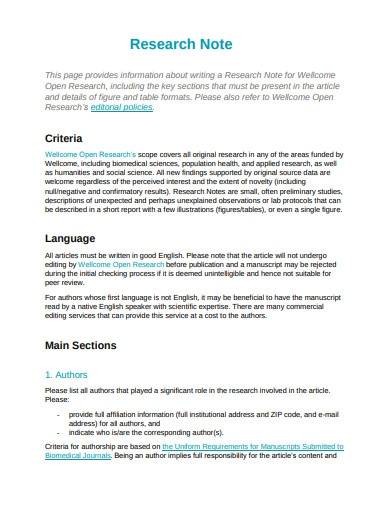
Size: 208 KB
Several businesses , organizations or professionals use a research note which is composed of short preliminary studies, descriptions of unanticipated and possible unidentified observations or lab protocols that can be written in a short report with a few illustrations such as figures/tables, or even a single figure.
What are the two main objectives that you must fulfill for your research project in several months? What are the things you need for your ethnographic fieldnotes ? These are the typical questions that you need to contemplate while taking down notes. Below are important ways you can do while preparing this document:
Why do you want to perform your research work in the first place? What kind of information do you need to record in your research journal? Identifying clear research goals and objectives for your research work is very essential in taking down notes .
Fiona McPherson wrote in her book “ Effective Notetaking ” that note-taking is primarily a tool to encode information effectively in your memory and your working memory capacity affects your ability to take notes. Some common methods are outlining, mapping, charting, sentence, and the Cornell method.
Moreover, there are a number of strategies that you can select from which includes highlighting, headings, and summaries. Highlighting helps in your concentration and when the text is of relatively low-density. Headings are classified as organizational signals that produce better outlines and better memory for the main points of a text. While summaries are used as guides for your research study.
If you’re recording notes during an interview , a conversation, a speech event, or surveys, we recommend that you use abbreviations, acronyms, initialism or phrases to effectively shorten sentences and quickly jot down important points in normal speech.
An abbreviation is a way to shorten a phrase but with a minimal difference without making a new word or phrase (Example: Ave. for avenue). While an acronym is a way of shortening a phrase by combining the first letter of each word in the phrase (Example: NCT for Neo Culture Technology).
If you’re a visual learner, an article suggested that you should do some sketchnotes. Created by designer and author Mike Rohde, this unique method combines traditional handwritten notes with symbols, drawings, charts, and other creative elements. Use visual cues to enhance memory retention. Develop ideas more comprehensively by making connections between points.
Research notes are similar to discussion notes to seek in progressing a new idea, theoretical perspective, research program, or methodological approach in organization studies.
ThoughtCo. explains in their article that note-taking is the practice of writing down or otherwise recording key points of information. It’s a significant part of the research process. Notes taken on class lectures or discussions may serve as study aids, while notes taken during an interview may provide material for an article, book, or essay.
The three note-taking styles are outline, visual, or Cornell . Outline and visual notes are quick personally, but need more work after class to make them useful while Cornell notes take the most work directly, but are the most valuable for studying or reviewing.
An article stated that “academic skills centers and other authorities on effective study skills consider reviewing and editing class notes to be the most important part of note-taking and essential to increasing learning capacity.” It is really fundamental to review your notes within 24 hours to retain what you have learned in your mind.
Remember that the main significance of note-taking for your research work is through its effect on how you encode the information in your brain. That’s why the act of note-taking is more essential than the result. You need to be able to paraphrase, organize, and make sense of the information while taking notes. To help you in recording your research notes or ethnographic fieldnotes, you can click and download our templates here!
Related Posts
Free 9+ market research report samples in pdf ms word, free 10+ nursing case study samples & templates in ms word ..., free 12+ sample thank you letter to mentor in pdf ms word, free 8+ sample soap note templates in ms word pdf, free 7+ sample thank you note after interview in pdf ms word, free 11+ absence note samples in ms word pdf, free 6+ consultant budget samples in pdf ms word, outline template, sample interview consent form, free 11+ one-page writing samples and templates in pdf, sample delegation letter, free 8+ sample research consent forms in pdf ms word, free 10+ legal research form and samples in pdf ms word, free 34 research papers in pdf, free 9+ quantitative research samples & templates in ms word ..., free 10+ market research plan samples & templates in ms word ..., free 7+ sample lined paper templates in pdf ms word, free 10+ patient case study samples & templates in ms word ..., free 7+ sample donation thank you letter templates in pdf ms ....
- Privacy Policy

Home » Research Methodology – Types, Examples and writing Guide
Research Methodology – Types, Examples and writing Guide
Table of Contents

Research Methodology
Definition:
Research Methodology refers to the systematic and scientific approach used to conduct research, investigate problems, and gather data and information for a specific purpose. It involves the techniques and procedures used to identify, collect , analyze , and interpret data to answer research questions or solve research problems . Moreover, They are philosophical and theoretical frameworks that guide the research process.
Structure of Research Methodology
Research methodology formats can vary depending on the specific requirements of the research project, but the following is a basic example of a structure for a research methodology section:
I. Introduction
- Provide an overview of the research problem and the need for a research methodology section
- Outline the main research questions and objectives
II. Research Design
- Explain the research design chosen and why it is appropriate for the research question(s) and objectives
- Discuss any alternative research designs considered and why they were not chosen
- Describe the research setting and participants (if applicable)
III. Data Collection Methods
- Describe the methods used to collect data (e.g., surveys, interviews, observations)
- Explain how the data collection methods were chosen and why they are appropriate for the research question(s) and objectives
- Detail any procedures or instruments used for data collection
IV. Data Analysis Methods
- Describe the methods used to analyze the data (e.g., statistical analysis, content analysis )
- Explain how the data analysis methods were chosen and why they are appropriate for the research question(s) and objectives
- Detail any procedures or software used for data analysis
V. Ethical Considerations
- Discuss any ethical issues that may arise from the research and how they were addressed
- Explain how informed consent was obtained (if applicable)
- Detail any measures taken to ensure confidentiality and anonymity
VI. Limitations
- Identify any potential limitations of the research methodology and how they may impact the results and conclusions
VII. Conclusion
- Summarize the key aspects of the research methodology section
- Explain how the research methodology addresses the research question(s) and objectives
Research Methodology Types
Types of Research Methodology are as follows:
Quantitative Research Methodology
This is a research methodology that involves the collection and analysis of numerical data using statistical methods. This type of research is often used to study cause-and-effect relationships and to make predictions.
Qualitative Research Methodology
This is a research methodology that involves the collection and analysis of non-numerical data such as words, images, and observations. This type of research is often used to explore complex phenomena, to gain an in-depth understanding of a particular topic, and to generate hypotheses.
Mixed-Methods Research Methodology
This is a research methodology that combines elements of both quantitative and qualitative research. This approach can be particularly useful for studies that aim to explore complex phenomena and to provide a more comprehensive understanding of a particular topic.
Case Study Research Methodology
This is a research methodology that involves in-depth examination of a single case or a small number of cases. Case studies are often used in psychology, sociology, and anthropology to gain a detailed understanding of a particular individual or group.
Action Research Methodology
This is a research methodology that involves a collaborative process between researchers and practitioners to identify and solve real-world problems. Action research is often used in education, healthcare, and social work.
Experimental Research Methodology
This is a research methodology that involves the manipulation of one or more independent variables to observe their effects on a dependent variable. Experimental research is often used to study cause-and-effect relationships and to make predictions.
Survey Research Methodology
This is a research methodology that involves the collection of data from a sample of individuals using questionnaires or interviews. Survey research is often used to study attitudes, opinions, and behaviors.
Grounded Theory Research Methodology
This is a research methodology that involves the development of theories based on the data collected during the research process. Grounded theory is often used in sociology and anthropology to generate theories about social phenomena.
Research Methodology Example
An Example of Research Methodology could be the following:
Research Methodology for Investigating the Effectiveness of Cognitive Behavioral Therapy in Reducing Symptoms of Depression in Adults
Introduction:
The aim of this research is to investigate the effectiveness of cognitive-behavioral therapy (CBT) in reducing symptoms of depression in adults. To achieve this objective, a randomized controlled trial (RCT) will be conducted using a mixed-methods approach.
Research Design:
The study will follow a pre-test and post-test design with two groups: an experimental group receiving CBT and a control group receiving no intervention. The study will also include a qualitative component, in which semi-structured interviews will be conducted with a subset of participants to explore their experiences of receiving CBT.
Participants:
Participants will be recruited from community mental health clinics in the local area. The sample will consist of 100 adults aged 18-65 years old who meet the diagnostic criteria for major depressive disorder. Participants will be randomly assigned to either the experimental group or the control group.
Intervention :
The experimental group will receive 12 weekly sessions of CBT, each lasting 60 minutes. The intervention will be delivered by licensed mental health professionals who have been trained in CBT. The control group will receive no intervention during the study period.
Data Collection:
Quantitative data will be collected through the use of standardized measures such as the Beck Depression Inventory-II (BDI-II) and the Generalized Anxiety Disorder-7 (GAD-7). Data will be collected at baseline, immediately after the intervention, and at a 3-month follow-up. Qualitative data will be collected through semi-structured interviews with a subset of participants from the experimental group. The interviews will be conducted at the end of the intervention period, and will explore participants’ experiences of receiving CBT.
Data Analysis:
Quantitative data will be analyzed using descriptive statistics, t-tests, and mixed-model analyses of variance (ANOVA) to assess the effectiveness of the intervention. Qualitative data will be analyzed using thematic analysis to identify common themes and patterns in participants’ experiences of receiving CBT.
Ethical Considerations:
This study will comply with ethical guidelines for research involving human subjects. Participants will provide informed consent before participating in the study, and their privacy and confidentiality will be protected throughout the study. Any adverse events or reactions will be reported and managed appropriately.
Data Management:
All data collected will be kept confidential and stored securely using password-protected databases. Identifying information will be removed from qualitative data transcripts to ensure participants’ anonymity.
Limitations:
One potential limitation of this study is that it only focuses on one type of psychotherapy, CBT, and may not generalize to other types of therapy or interventions. Another limitation is that the study will only include participants from community mental health clinics, which may not be representative of the general population.
Conclusion:
This research aims to investigate the effectiveness of CBT in reducing symptoms of depression in adults. By using a randomized controlled trial and a mixed-methods approach, the study will provide valuable insights into the mechanisms underlying the relationship between CBT and depression. The results of this study will have important implications for the development of effective treatments for depression in clinical settings.
How to Write Research Methodology
Writing a research methodology involves explaining the methods and techniques you used to conduct research, collect data, and analyze results. It’s an essential section of any research paper or thesis, as it helps readers understand the validity and reliability of your findings. Here are the steps to write a research methodology:
- Start by explaining your research question: Begin the methodology section by restating your research question and explaining why it’s important. This helps readers understand the purpose of your research and the rationale behind your methods.
- Describe your research design: Explain the overall approach you used to conduct research. This could be a qualitative or quantitative research design, experimental or non-experimental, case study or survey, etc. Discuss the advantages and limitations of the chosen design.
- Discuss your sample: Describe the participants or subjects you included in your study. Include details such as their demographics, sampling method, sample size, and any exclusion criteria used.
- Describe your data collection methods : Explain how you collected data from your participants. This could include surveys, interviews, observations, questionnaires, or experiments. Include details on how you obtained informed consent, how you administered the tools, and how you minimized the risk of bias.
- Explain your data analysis techniques: Describe the methods you used to analyze the data you collected. This could include statistical analysis, content analysis, thematic analysis, or discourse analysis. Explain how you dealt with missing data, outliers, and any other issues that arose during the analysis.
- Discuss the validity and reliability of your research : Explain how you ensured the validity and reliability of your study. This could include measures such as triangulation, member checking, peer review, or inter-coder reliability.
- Acknowledge any limitations of your research: Discuss any limitations of your study, including any potential threats to validity or generalizability. This helps readers understand the scope of your findings and how they might apply to other contexts.
- Provide a summary: End the methodology section by summarizing the methods and techniques you used to conduct your research. This provides a clear overview of your research methodology and helps readers understand the process you followed to arrive at your findings.
When to Write Research Methodology
Research methodology is typically written after the research proposal has been approved and before the actual research is conducted. It should be written prior to data collection and analysis, as it provides a clear roadmap for the research project.
The research methodology is an important section of any research paper or thesis, as it describes the methods and procedures that will be used to conduct the research. It should include details about the research design, data collection methods, data analysis techniques, and any ethical considerations.
The methodology should be written in a clear and concise manner, and it should be based on established research practices and standards. It is important to provide enough detail so that the reader can understand how the research was conducted and evaluate the validity of the results.
Applications of Research Methodology
Here are some of the applications of research methodology:
- To identify the research problem: Research methodology is used to identify the research problem, which is the first step in conducting any research.
- To design the research: Research methodology helps in designing the research by selecting the appropriate research method, research design, and sampling technique.
- To collect data: Research methodology provides a systematic approach to collect data from primary and secondary sources.
- To analyze data: Research methodology helps in analyzing the collected data using various statistical and non-statistical techniques.
- To test hypotheses: Research methodology provides a framework for testing hypotheses and drawing conclusions based on the analysis of data.
- To generalize findings: Research methodology helps in generalizing the findings of the research to the target population.
- To develop theories : Research methodology is used to develop new theories and modify existing theories based on the findings of the research.
- To evaluate programs and policies : Research methodology is used to evaluate the effectiveness of programs and policies by collecting data and analyzing it.
- To improve decision-making: Research methodology helps in making informed decisions by providing reliable and valid data.
Purpose of Research Methodology
Research methodology serves several important purposes, including:
- To guide the research process: Research methodology provides a systematic framework for conducting research. It helps researchers to plan their research, define their research questions, and select appropriate methods and techniques for collecting and analyzing data.
- To ensure research quality: Research methodology helps researchers to ensure that their research is rigorous, reliable, and valid. It provides guidelines for minimizing bias and error in data collection and analysis, and for ensuring that research findings are accurate and trustworthy.
- To replicate research: Research methodology provides a clear and detailed account of the research process, making it possible for other researchers to replicate the study and verify its findings.
- To advance knowledge: Research methodology enables researchers to generate new knowledge and to contribute to the body of knowledge in their field. It provides a means for testing hypotheses, exploring new ideas, and discovering new insights.
- To inform decision-making: Research methodology provides evidence-based information that can inform policy and decision-making in a variety of fields, including medicine, public health, education, and business.
Advantages of Research Methodology
Research methodology has several advantages that make it a valuable tool for conducting research in various fields. Here are some of the key advantages of research methodology:
- Systematic and structured approach : Research methodology provides a systematic and structured approach to conducting research, which ensures that the research is conducted in a rigorous and comprehensive manner.
- Objectivity : Research methodology aims to ensure objectivity in the research process, which means that the research findings are based on evidence and not influenced by personal bias or subjective opinions.
- Replicability : Research methodology ensures that research can be replicated by other researchers, which is essential for validating research findings and ensuring their accuracy.
- Reliability : Research methodology aims to ensure that the research findings are reliable, which means that they are consistent and can be depended upon.
- Validity : Research methodology ensures that the research findings are valid, which means that they accurately reflect the research question or hypothesis being tested.
- Efficiency : Research methodology provides a structured and efficient way of conducting research, which helps to save time and resources.
- Flexibility : Research methodology allows researchers to choose the most appropriate research methods and techniques based on the research question, data availability, and other relevant factors.
- Scope for innovation: Research methodology provides scope for innovation and creativity in designing research studies and developing new research techniques.
Research Methodology Vs Research Methods
About the author.
Muhammad Hassan
Researcher, Academic Writer, Web developer
You may also like

How to Cite Research Paper – All Formats and...

Data Collection – Methods Types and Examples

Delimitations in Research – Types, Examples and...


Research Paper Format – Types, Examples and...

Research Process – Steps, Examples and Tips

Research Design – Types, Methods and Examples
42+ SAMPLE Research Note in PDF | MS Word

Research Note | MS Word
42+ sample research note, what is a research note, elements of a research note, types of research methods, steps in taking research notes, what is documentary research, what is consent on a research study, how long does research usually take.

Research Note Template
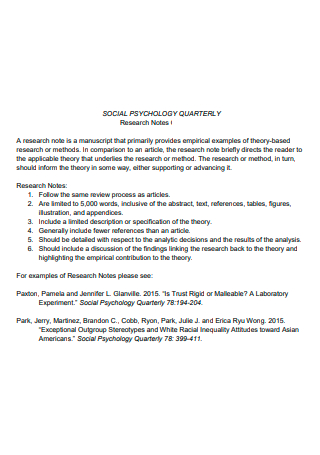
Social Psychology Quarterly Research Note
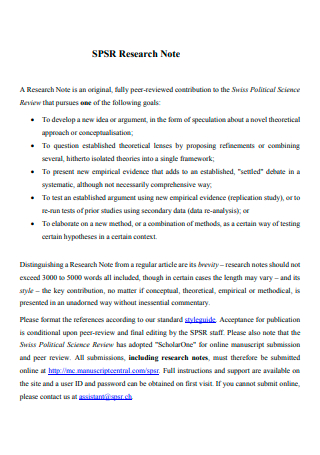
Basic Research Note
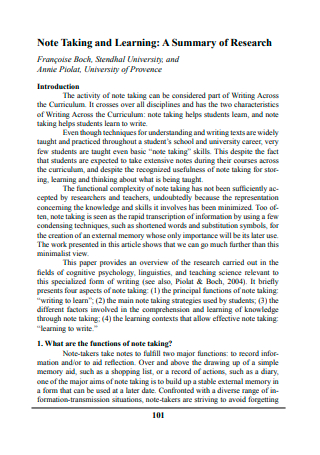
Research Note Taking and Learning
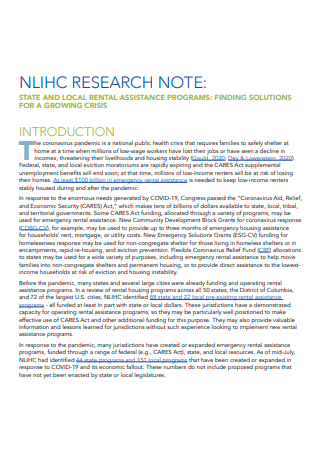
Research Note in PDF
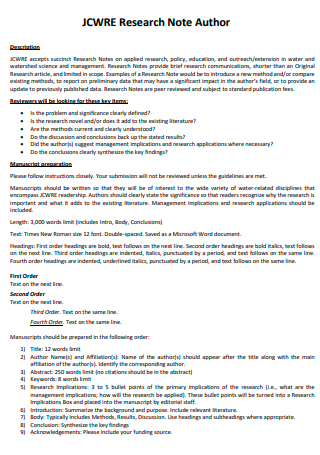
Research Note Author
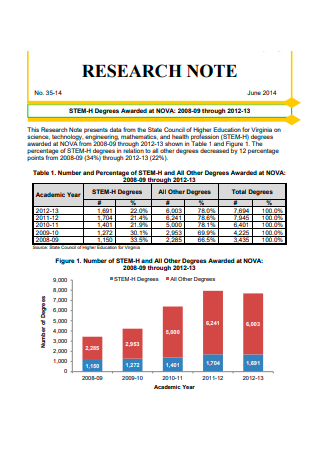
Formal Research Note
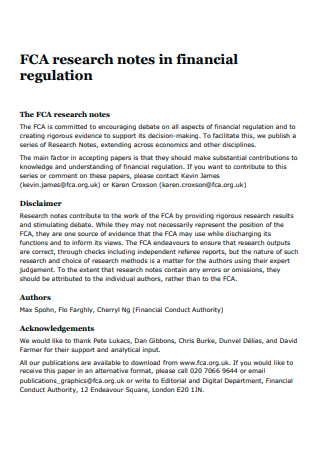
Financial Regulation Research Note

Research Note Taking
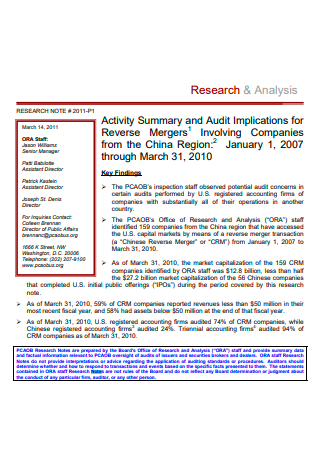
Research and Analysis Note
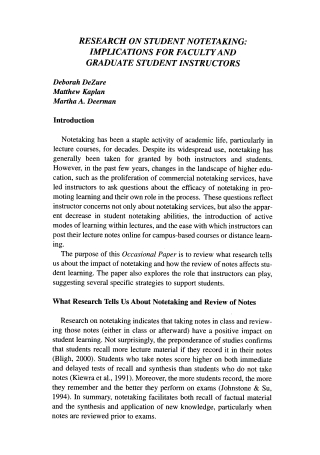
Research on Student Note Taking
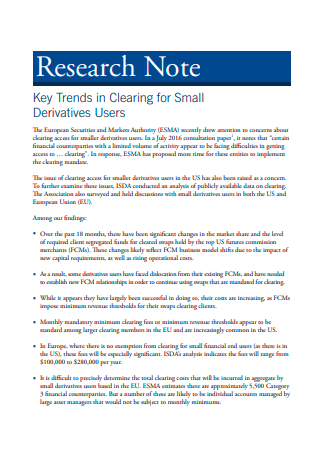
Small Derivatives Users Research Note
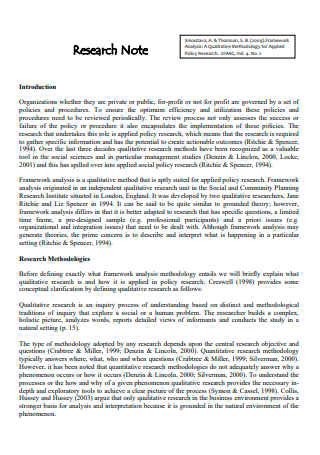
Printable Research Note
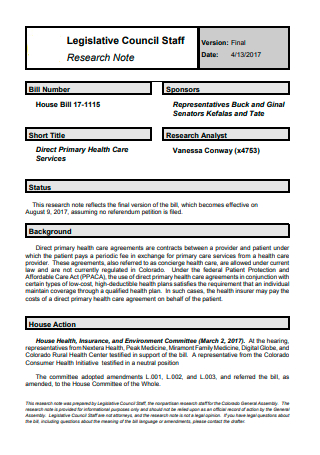
Legislative Council Staff Research Note
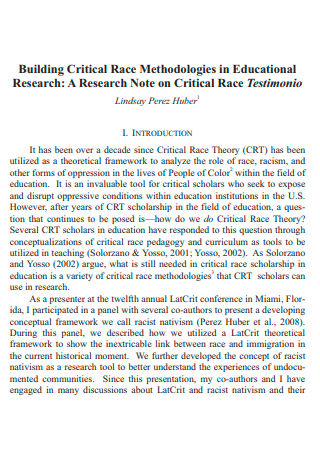
Critical Race Research Note
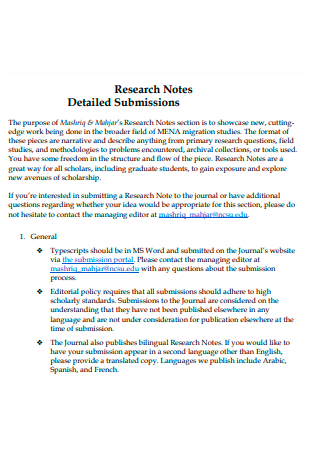
Research Note Detailed Submission
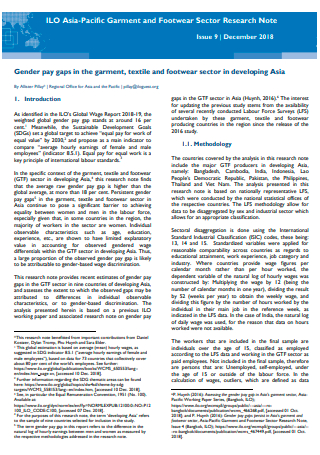
Garment and Footwear Sector Research Note

Lesson Research Note Taking
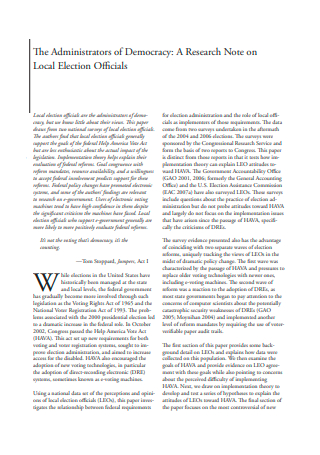
Local Election Officials Research Note
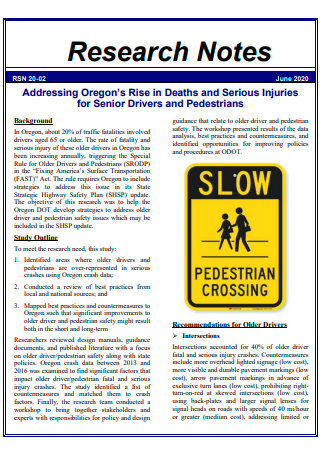
Research Note Example
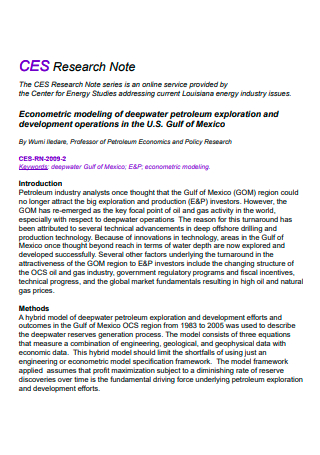
Simple Research Note
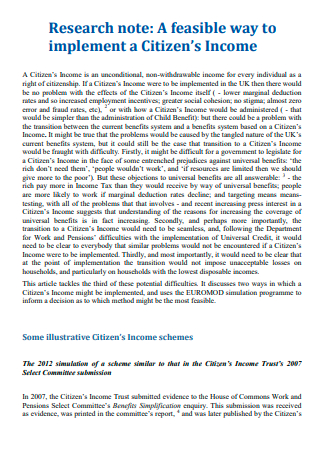
Citizens Income Research Note
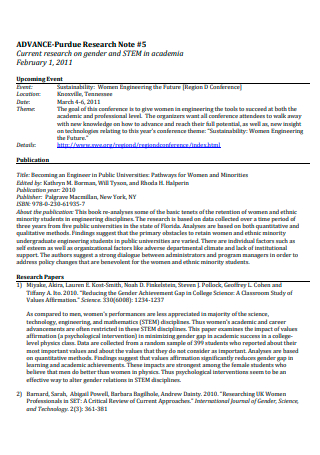
Advance Research Note
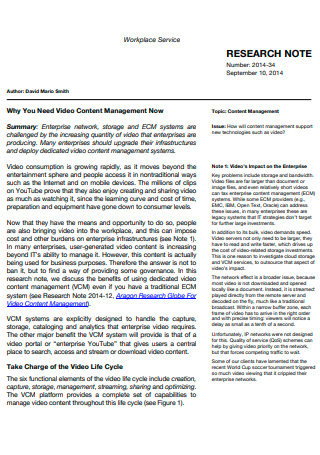
Workplace Service Research Note
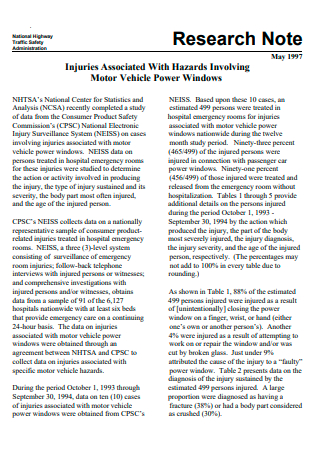
Research Note Format
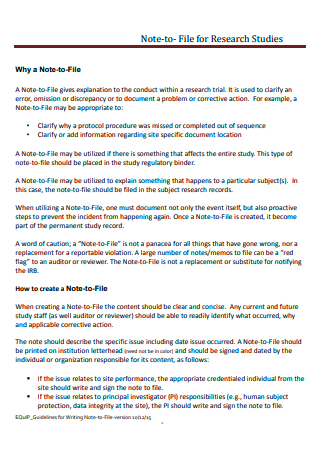
Note to File For Research Studies
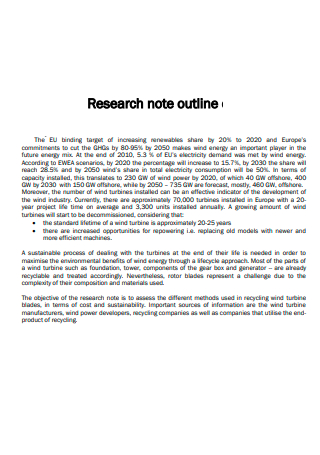
Research Note Outline
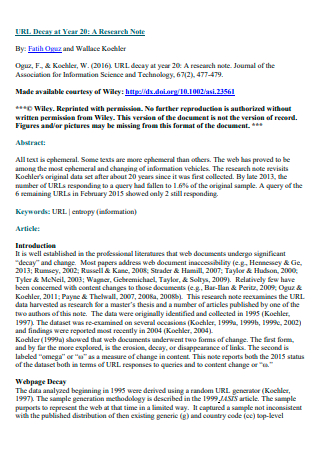
Decay at Year Research Note
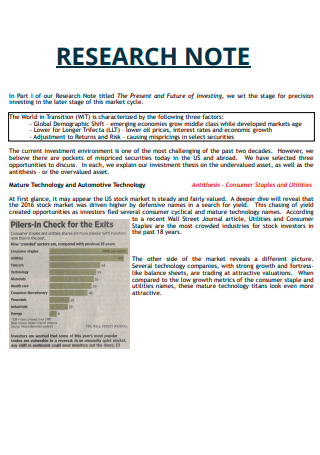
Investing Research Note
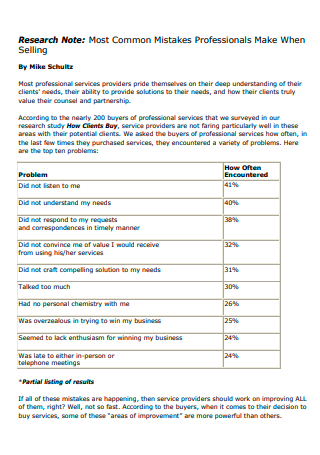
Standard Research Note
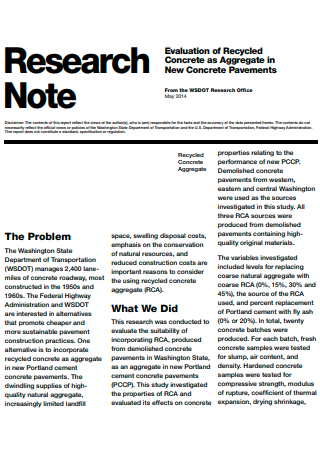
Concrete Research Note
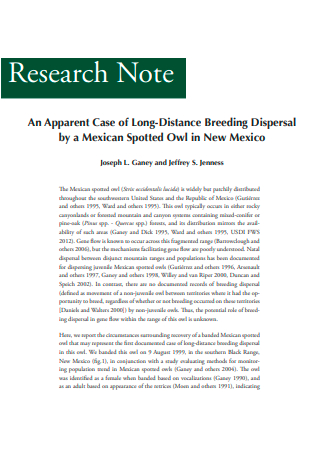
Draft Research Note

Sample Research Note
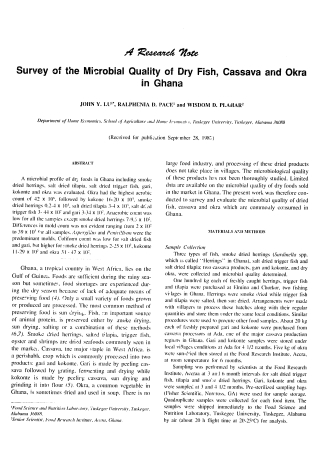
Research Note Survey
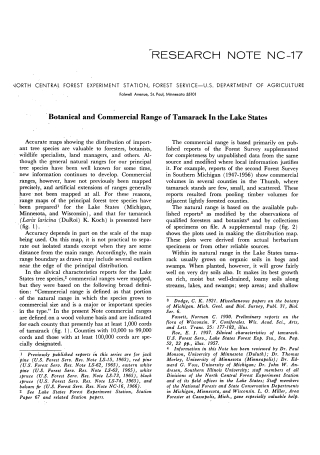
Forest Service Research Note
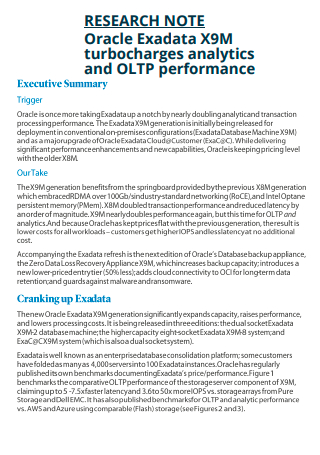
Research Note Oracle
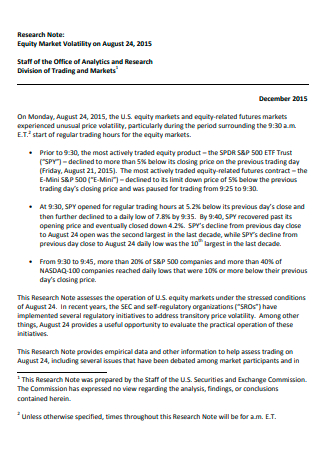
Equity Market Research Note
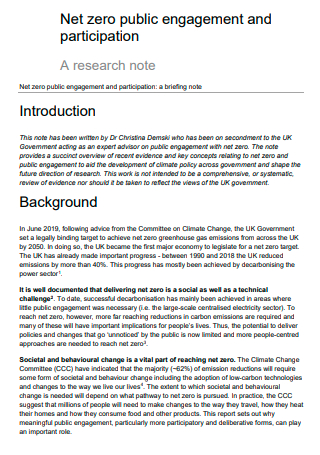
Public Engagement and Participation Research Note
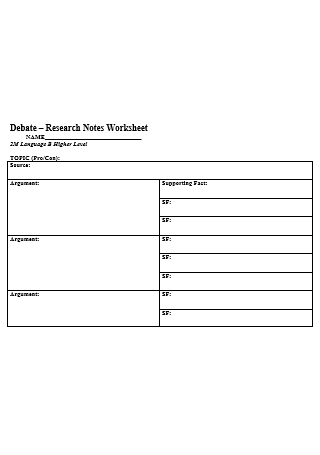
Debate Research Note Worksheet
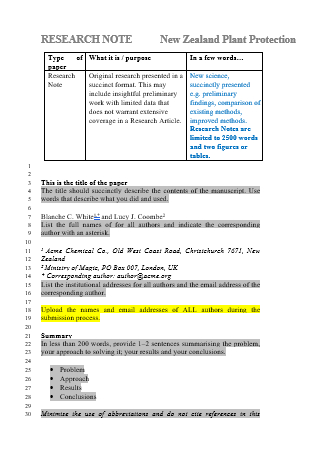
Plant Protection Research Note
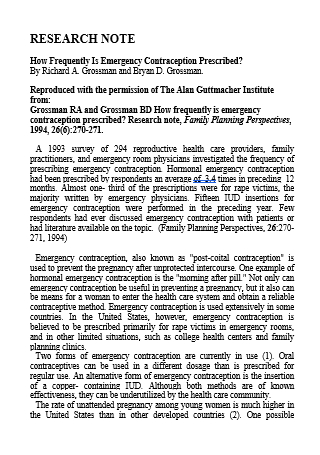
Research Note in DOC
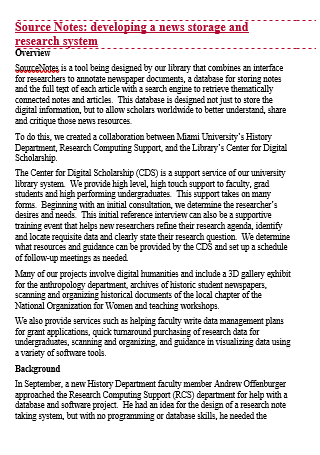
Research System Source Note
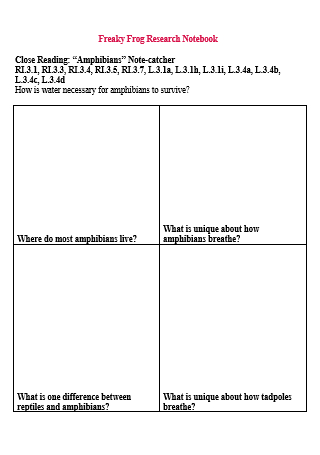
Frog Research Notebook
1. identify your ideas, 2. only write what is necessary, 3. take time in labeling your notes, 4. verify your research notes, share this post on your network, file formats, word templates, google docs templates, excel templates, powerpoint templates, google sheets templates, google slides templates, pdf templates, publisher templates, psd templates, indesign templates, illustrator templates, pages templates, keynote templates, numbers templates, outlook templates, you may also like these articles, 10+ sample nursing notes in pdf | google docs | ms word | apple pages.
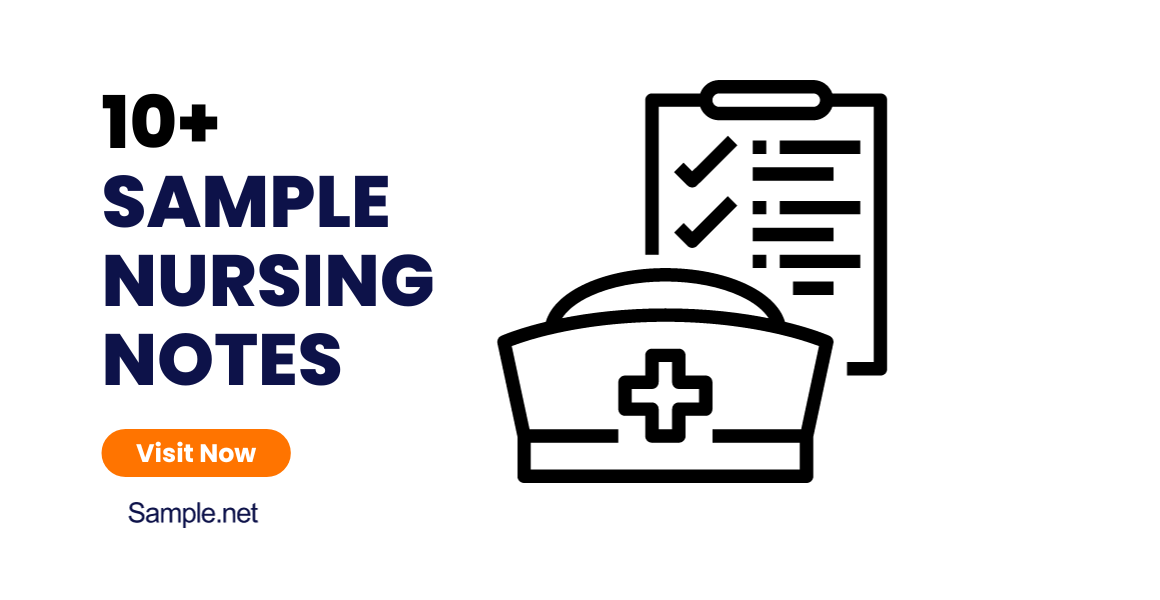
[bb_toc content=''][/bb_toc] [ns_row class="review-inner"][ns_h2 class="sample-title"]10+ Sample Nursing Notes[/ns_h2][ns_p class="sample-para"][/ns_p][ns_ul][ns_li][ns_alink target="_blank" href="#Nursing-School-Notes-Template" name="INSIDEREVIEWTEMPLATE&h=Nursing School Notes Template&d=https://www.template.net/editable/87790/nursing-school-notes&src=https://images.sample.net/wp-content/uploads/2023/03/Nursing-School-Notes-Template.jpg&f=Google Docs , MS Word , Apple Pages,&size="] [/ns_alink][ns_alink target="_blank" href="#Nursing-School-Notes-Template" name="INSIDEREVIEWTEMPLATE&h=Nursing School Notes Template&d=https://www.template.net/editable/87790/nursing-school-notes&src=https://images.sample.net/wp-content/uploads/2023/03/Nursing-School-Notes-Template.jpg"]…
18+ SAMPLE Return Delivery Note in PDF | MS Word
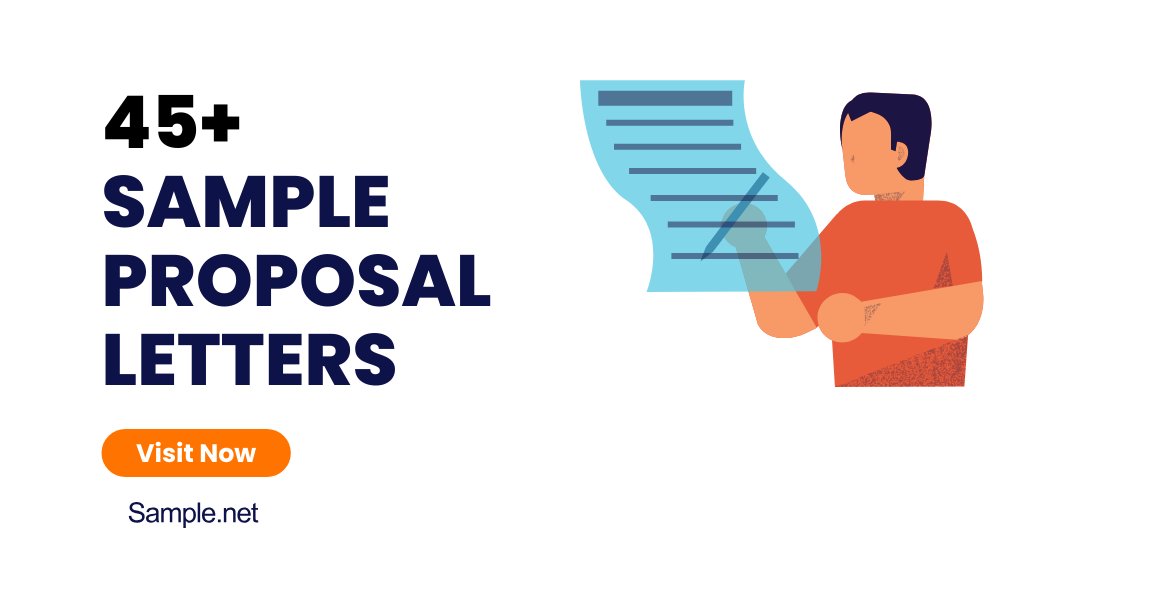
A delivery can be returned for a variety of reasons. It could be due to faulty products, or it could be because a replacement is required. Everyone nowadays has…
browse by categories
- Questionnaire
- Description
- Reconciliation
- Certificate
- Spreadsheet
Information
- privacy policy
- Terms & Conditions
Thank you for visiting nature.com. You are using a browser version with limited support for CSS. To obtain the best experience, we recommend you use a more up to date browser (or turn off compatibility mode in Internet Explorer). In the meantime, to ensure continued support, we are displaying the site without styles and JavaScript.
- View all journals
- Explore content
- About the journal
- Publish with us
- Sign up for alerts
- 09 May 2024
Cubic millimetre of brain mapped in spectacular detail
- Carissa Wong
You can also search for this author in PubMed Google Scholar
Rendering based on electron-microscope data, showing the positions of neurons in a fragment of the brain cortex. Neurons are coloured according to size. Credit: Google Research & Lichtman Lab (Harvard University). Renderings by D. Berger (Harvard University)
You have full access to this article via your institution.
Researchers have mapped a tiny piece of the human brain in astonishing detail. The resulting cell atlas, which was described today in Science 1 and is available online , reveals new patterns of connections between brain cells called neurons, as well as cells that wrap around themselves to form knots, and pairs of neurons that are almost mirror images of each other.
The 3D map covers a volume of about one cubic millimetre, one-millionth of a whole brain, and contains roughly 57,000 cells and 150 million synapses — the connections between neurons. It incorporates a colossal 1.4 petabytes of data. “It’s a little bit humbling,” says Viren Jain, a neuroscientist at Google in Mountain View, California, and a co-author of the paper. “How are we ever going to really come to terms with all this complexity?”
Slivers of brain
The brain fragment was taken from a 45-year-old woman when she underwent surgery to treat her epilepsy. It came from the cortex, a part of the brain involved in learning, problem-solving and processing sensory signals. The sample was immersed in preservatives and stained with heavy metals to make the cells easier to see. Neuroscientist Jeff Lichtman at Harvard University in Cambridge, Massachusetts, and his colleagues then cut the sample into around 5,000 slices — each just 34 nanometres thick — that could be imaged using electron microscopes.
Jain’s team then built artificial-intelligence models that were able to stitch the microscope images together to reconstruct the whole sample in 3D. “I remember this moment, going into the map and looking at one individual synapse from this woman’s brain, and then zooming out into these other millions of pixels,” says Jain. “It felt sort of spiritual.”

A single neuron (white) shown with 5,600 of the axons (blue) that connect to it. The synapses that make these connections are shown in green. Credit: Google Research & Lichtman Lab (Harvard University). Renderings by D. Berger (Harvard University)
When examining the model in detail, the researchers discovered unconventional neurons, including some that made up to 50 connections with each other. “In general, you would find a couple of connections at most between two neurons,” says Jain. Elsewhere, the model showed neurons with tendrils that formed knots around themselves. “Nobody had seen anything like this before,” Jain adds.
The team also found pairs of neurons that were near-perfect mirror images of each other. “We found two groups that would send their dendrites in two different directions, and sometimes there was a kind of mirror symmetry,” Jain says. It is unclear what role these features have in the brain.
Proofreaders needed
The map is so large that most of it has yet to be manually checked, and it could still contain errors created by the process of stitching so many images together. “Hundreds of cells have been ‘proofread’, but that’s obviously a few per cent of the 50,000 cells in there,” says Jain. He hopes that others will help to proofread parts of the map they are interested in. The team plans to produce similar maps of brain samples from other people — but a map of the entire brain is unlikely in the next few decades, he says.
“This paper is really the tour de force creation of a human cortex data set,” says Hongkui Zeng, director of the Allen Institute for Brain Science in Seattle. The vast amount of data that has been made freely accessible will “allow the community to look deeper into the micro-circuitry in the human cortex”, she adds.
Gaining a deeper understanding of how the cortex works could offer clues about how to treat some psychiatric and neurodegenerative diseases. “This map provides unprecedented details that can unveil new rules of neural connections and help to decipher the inner working of the human brain,” says Yongsoo Kim, a neuroscientist at Pennsylvania State University in Hershey.
Nature 629 , 739-740 (2024)
doi: https://doi.org/10.1038/d41586-024-01387-9
Shapson-Coe, A. et al. Science 384 , eadk4858 (2024).
Article Google Scholar
Download references
Reprints and permissions
Related Articles

- Neuroscience

Temporal multiplexing of perception and memory codes in IT cortex
Article 15 MAY 24

Volatile working memory representations crystallize with practice

Evolution of a novel adrenal cell type that promotes parental care

Organoids merge to model the blood–brain barrier
Research Highlight 15 MAY 24

How does ChatGPT ‘think’? Psychology and neuroscience crack open AI large language models
News Feature 14 MAY 24

Brain-reading device is best yet at decoding ‘internal speech’
News 13 MAY 24
Vice President, Nature Communications Portfolio
This is an exciting opportunity to play a key leadership role in the market-leading journal Nature Portfolio and help drive its overall contribution.
New York City, New York (US), Berlin, or Heidelberg
Springer Nature Ltd
Senior Postdoctoral Research Fellow
Senior Postdoctoral Research Fellow required to lead exciting projects in Cancer Cell Cycle Biology and Cancer Epigenetics.
Melbourne University, Melbourne (AU)
University of Melbourne & Peter MacCallum Cancer Centre
Overseas Talent, Embarking on a New Journey Together at Tianjin University
We cordially invite outstanding young individuals from overseas to apply for the Excellent Young Scientists Fund Program (Overseas).
Tianjin, China
Tianjin University (TJU)
Chair Professor Positions in the School of Pharmaceutical Science and Technology
SPST seeks top Faculty scholars in Pharmaceutical Sciences.
Chair Professor Positions in the School of Precision Instruments and Optoelectronic Engineering
We are committed to accomplishing the mission of achieving a world-top-class engineering school.
Sign up for the Nature Briefing newsletter — what matters in science, free to your inbox daily.
Quick links
- Explore articles by subject
- Guide to authors
- Editorial policies

Virome Sequencing Identifies H5N1 Avian Influenza in Wastewater from Nine Cities
- Find this author on Google Scholar
- Find this author on PubMed
- Search for this author on this site
- ORCID record for Michael J. Tisza
- ORCID record for Fuqing Wu
- For correspondence: [email protected]
- Info/History
- Preview PDF
Avian influenza (serotype H5N1) is a highly pathogenic virus that emerged in domestic waterfowl in 1996. Over the past decade, zoonotic transmission to mammals, including humans, has been reported. Although human to human transmission is rare, infection has been fatal in nearly half of patients who have contracted the virus in past outbreaks. The increasing presence of the virus in domesticated animals raises substantial concerns that viral adaptation to immunologically naïve humans may result in the next flu pandemic. Wastewater-based epidemiology (WBE) to track viruses was historically used to track polio and has recently been implemented for SARS-CoV2 monitoring during the COVID-19 pandemic. Here, using an agnostic, hybrid-capture sequencing approach, we report the detection of H5N1 in wastewater in nine Texas cities, with a total catchment area population in the millions, over a two-month period from March 4 th to April 25 th , 2024. Sequencing reads uniquely aligning to H5N1 covered all eight genome segments, with best alignments to clade 2.3.4.4b. Notably, 19 of 23 monitored sites had at least one detection event, and the H5N1 serotype became dominant over seasonal influenza over time. A variant analysis suggests avian or bovine origin but other potential sources, especially humans, could not be excluded. We report the value of wastewater sequencing to track avian influenza.
Competing Interest Statement
The authors have declared no competing interest.
Funding Statement
This work was supported by S.B. 1780, 87th Legislature, 2021 Reg. Sess. (Texas 2021) (E.B., A.W.M., and J.F.P.), NIH/NIAID (Grant number U19 AI44297) (A.W.M.), Baylor College of Medicine Melnick Seed (A.W.M) and Alkek Foundation Seed (J.F.P.), and Pandemic Threat Technology Center (P.A.P.).
Author Declarations
I confirm all relevant ethical guidelines have been followed, and any necessary IRB and/or ethics committee approvals have been obtained.
I confirm that all necessary patient/participant consent has been obtained and the appropriate institutional forms have been archived, and that any patient/participant/sample identifiers included were not known to anyone (e.g., hospital staff, patients or participants themselves) outside the research group so cannot be used to identify individuals.
I understand that all clinical trials and any other prospective interventional studies must be registered with an ICMJE-approved registry, such as ClinicalTrials.gov. I confirm that any such study reported in the manuscript has been registered and the trial registration ID is provided (note: if posting a prospective study registered retrospectively, please provide a statement in the trial ID field explaining why the study was not registered in advance).
I have followed all appropriate research reporting guidelines, such as any relevant EQUATOR Network research reporting checklist(s) and other pertinent material, if applicable.
Data Availability
All data produced are available online at https://zenodo.org/doi/10.5281/zenodo.11175923 and NCBI SRA BioProject: PRJNA966185
View the discussion thread.
Thank you for your interest in spreading the word about medRxiv.
NOTE: Your email address is requested solely to identify you as the sender of this article.

Citation Manager Formats
- EndNote (tagged)
- EndNote 8 (xml)
- RefWorks Tagged
- Ref Manager
- Tweet Widget
- Facebook Like
- Google Plus One
Subject Area
- Infectious Diseases (except HIV/AIDS)
- Addiction Medicine (324)
- Allergy and Immunology (628)
- Anesthesia (165)
- Cardiovascular Medicine (2383)
- Dentistry and Oral Medicine (289)
- Dermatology (207)
- Emergency Medicine (380)
- Endocrinology (including Diabetes Mellitus and Metabolic Disease) (839)
- Epidemiology (11777)
- Forensic Medicine (10)
- Gastroenterology (703)
- Genetic and Genomic Medicine (3751)
- Geriatric Medicine (350)
- Health Economics (635)
- Health Informatics (2401)
- Health Policy (935)
- Health Systems and Quality Improvement (900)
- Hematology (341)
- HIV/AIDS (782)
- Infectious Diseases (except HIV/AIDS) (13323)
- Intensive Care and Critical Care Medicine (769)
- Medical Education (366)
- Medical Ethics (105)
- Nephrology (398)
- Neurology (3513)
- Nursing (198)
- Nutrition (528)
- Obstetrics and Gynecology (675)
- Occupational and Environmental Health (665)
- Oncology (1825)
- Ophthalmology (538)
- Orthopedics (219)
- Otolaryngology (287)
- Pain Medicine (233)
- Palliative Medicine (66)
- Pathology (446)
- Pediatrics (1035)
- Pharmacology and Therapeutics (426)
- Primary Care Research (422)
- Psychiatry and Clinical Psychology (3181)
- Public and Global Health (6150)
- Radiology and Imaging (1281)
- Rehabilitation Medicine and Physical Therapy (749)
- Respiratory Medicine (828)
- Rheumatology (379)
- Sexual and Reproductive Health (372)
- Sports Medicine (323)
- Surgery (402)
- Toxicology (50)
- Transplantation (172)
- Urology (146)
- Skip to main content
- Keyboard shortcuts for audio player
Your Health
- Treatments & Tests
- Health Inc.
- Public Health
Why writing by hand beats typing for thinking and learning
Jonathan Lambert

If you're like many digitally savvy Americans, it has likely been a while since you've spent much time writing by hand.
The laborious process of tracing out our thoughts, letter by letter, on the page is becoming a relic of the past in our screen-dominated world, where text messages and thumb-typed grocery lists have replaced handwritten letters and sticky notes. Electronic keyboards offer obvious efficiency benefits that have undoubtedly boosted our productivity — imagine having to write all your emails longhand.
To keep up, many schools are introducing computers as early as preschool, meaning some kids may learn the basics of typing before writing by hand.
But giving up this slower, more tactile way of expressing ourselves may come at a significant cost, according to a growing body of research that's uncovering the surprising cognitive benefits of taking pen to paper, or even stylus to iPad — for both children and adults.
Is this some kind of joke? A school facing shortages starts teaching standup comedy
In kids, studies show that tracing out ABCs, as opposed to typing them, leads to better and longer-lasting recognition and understanding of letters. Writing by hand also improves memory and recall of words, laying down the foundations of literacy and learning. In adults, taking notes by hand during a lecture, instead of typing, can lead to better conceptual understanding of material.
"There's actually some very important things going on during the embodied experience of writing by hand," says Ramesh Balasubramaniam , a neuroscientist at the University of California, Merced. "It has important cognitive benefits."
While those benefits have long been recognized by some (for instance, many authors, including Jennifer Egan and Neil Gaiman , draft their stories by hand to stoke creativity), scientists have only recently started investigating why writing by hand has these effects.
A slew of recent brain imaging research suggests handwriting's power stems from the relative complexity of the process and how it forces different brain systems to work together to reproduce the shapes of letters in our heads onto the page.
Your brain on handwriting
Both handwriting and typing involve moving our hands and fingers to create words on a page. But handwriting, it turns out, requires a lot more fine-tuned coordination between the motor and visual systems. This seems to more deeply engage the brain in ways that support learning.

Shots - Health News
Feeling artsy here's how making art helps your brain.
"Handwriting is probably among the most complex motor skills that the brain is capable of," says Marieke Longcamp , a cognitive neuroscientist at Aix-Marseille Université.
Gripping a pen nimbly enough to write is a complicated task, as it requires your brain to continuously monitor the pressure that each finger exerts on the pen. Then, your motor system has to delicately modify that pressure to re-create each letter of the words in your head on the page.
"Your fingers have to each do something different to produce a recognizable letter," says Sophia Vinci-Booher , an educational neuroscientist at Vanderbilt University. Adding to the complexity, your visual system must continuously process that letter as it's formed. With each stroke, your brain compares the unfolding script with mental models of the letters and words, making adjustments to fingers in real time to create the letters' shapes, says Vinci-Booher.
That's not true for typing.
To type "tap" your fingers don't have to trace out the form of the letters — they just make three relatively simple and uniform movements. In comparison, it takes a lot more brainpower, as well as cross-talk between brain areas, to write than type.
Recent brain imaging studies bolster this idea. A study published in January found that when students write by hand, brain areas involved in motor and visual information processing " sync up " with areas crucial to memory formation, firing at frequencies associated with learning.
"We don't see that [synchronized activity] in typewriting at all," says Audrey van der Meer , a psychologist and study co-author at the Norwegian University of Science and Technology. She suggests that writing by hand is a neurobiologically richer process and that this richness may confer some cognitive benefits.
Other experts agree. "There seems to be something fundamental about engaging your body to produce these shapes," says Robert Wiley , a cognitive psychologist at the University of North Carolina, Greensboro. "It lets you make associations between your body and what you're seeing and hearing," he says, which might give the mind more footholds for accessing a given concept or idea.
Those extra footholds are especially important for learning in kids, but they may give adults a leg up too. Wiley and others worry that ditching handwriting for typing could have serious consequences for how we all learn and think.
What might be lost as handwriting wanes
The clearest consequence of screens and keyboards replacing pen and paper might be on kids' ability to learn the building blocks of literacy — letters.
"Letter recognition in early childhood is actually one of the best predictors of later reading and math attainment," says Vinci-Booher. Her work suggests the process of learning to write letters by hand is crucial for learning to read them.
"When kids write letters, they're just messy," she says. As kids practice writing "A," each iteration is different, and that variability helps solidify their conceptual understanding of the letter.
Research suggests kids learn to recognize letters better when seeing variable handwritten examples, compared with uniform typed examples.
This helps develop areas of the brain used during reading in older children and adults, Vinci-Booher found.
"This could be one of the ways that early experiences actually translate to long-term life outcomes," she says. "These visually demanding, fine motor actions bake in neural communication patterns that are really important for learning later on."
Ditching handwriting instruction could mean that those skills don't get developed as well, which could impair kids' ability to learn down the road.
"If young children are not receiving any handwriting training, which is very good brain stimulation, then their brains simply won't reach their full potential," says van der Meer. "It's scary to think of the potential consequences."
Many states are trying to avoid these risks by mandating cursive instruction. This year, California started requiring elementary school students to learn cursive , and similar bills are moving through state legislatures in several states, including Indiana, Kentucky, South Carolina and Wisconsin. (So far, evidence suggests that it's the writing by hand that matters, not whether it's print or cursive.)
Slowing down and processing information
For adults, one of the main benefits of writing by hand is that it simply forces us to slow down.
During a meeting or lecture, it's possible to type what you're hearing verbatim. But often, "you're not actually processing that information — you're just typing in the blind," says van der Meer. "If you take notes by hand, you can't write everything down," she says.
The relative slowness of the medium forces you to process the information, writing key words or phrases and using drawing or arrows to work through ideas, she says. "You make the information your own," she says, which helps it stick in the brain.
Such connections and integration are still possible when typing, but they need to be made more intentionally. And sometimes, efficiency wins out. "When you're writing a long essay, it's obviously much more practical to use a keyboard," says van der Meer.
Still, given our long history of using our hands to mark meaning in the world, some scientists worry about the more diffuse consequences of offloading our thinking to computers.
"We're foisting a lot of our knowledge, extending our cognition, to other devices, so it's only natural that we've started using these other agents to do our writing for us," says Balasubramaniam.
It's possible that this might free up our minds to do other kinds of hard thinking, he says. Or we might be sacrificing a fundamental process that's crucial for the kinds of immersive cognitive experiences that enable us to learn and think at our full potential.
Balasubramaniam stresses, however, that we don't have to ditch digital tools to harness the power of handwriting. So far, research suggests that scribbling with a stylus on a screen activates the same brain pathways as etching ink on paper. It's the movement that counts, he says, not its final form.
Jonathan Lambert is a Washington, D.C.-based freelance journalist who covers science, health and policy.
- handwriting
- Future Students
- Current Students
- Faculty/Staff

News and Media
- News & Media Home
- Research Stories
- School's In
- In the Media
You are here
70 years after brown v. board of education, new research shows rise in school segregation.

As the nation prepares to mark the 70th anniversary of the landmark U.S. Supreme Court ruling in Brown v. Board of Education , a new report from researchers at Stanford and USC shows that racial and economic segregation among schools has grown steadily in large school districts over the past three decades — an increase that appears to be driven in part by policies favoring school choice over integration.
Analyzing data from U.S. public schools going back to 1967, the researchers found that segregation between white and Black students has increased by 64 percent since 1988 in the 100 largest districts, and segregation by economic status has increased by about 50 percent since 1991.
The report also provides new evidence about the forces driving recent trends in school segregation, showing that the expansion of charter schools has played a major role.
The findings were released on May 6 with the launch of the Segregation Explorer , a new interactive website from the Educational Opportunity Project at Stanford University. The website provides searchable data on racial and economic school segregation in U.S. states, counties, metropolitan areas, and school districts from 1991 to 2022.
“School segregation levels are not at pre- Brown levels, but they are high and have been rising steadily since the late 1980s,” said Sean Reardon , the Professor of Poverty and Inequality in Education at Stanford Graduate School of Education and faculty director of the Educational Opportunity Project. “In most large districts, school segregation has increased while residential segregation and racial economic inequality have declined, and our findings indicate that policy choices – not demographic changes – are driving the increase.”
“There’s a tendency to attribute segregation in schools to segregation in neighborhoods,” said Ann Owens , a professor of sociology and public policy at USC. “But we’re finding that the story is more complicated than that.”
Assessing the rise
In the Brown v. Board decision issued on May 17, 1954, the U.S. Supreme Court ruled that racially segregated public schools violated the Equal Protection Clause of the Fourteenth Amendment and established that “separate but equal” schools were not only inherently unequal but unconstitutional. The ruling paved the way for future decisions that led to rapid school desegregation in many school districts in the late 1960s and early 1970s.
Though segregation in most school districts is much lower than it was 60 years ago, the researchers found that over the past three decades, both racial and economic segregation in large districts increased. Much of the increase in economic segregation since 1991, measured by segregation between students eligible and ineligible for free lunch, occurred in the last 15 years.
White-Hispanic and white-Asian segregation, while lower on average than white-Black segregation, have both more than doubled in large school districts since the 1980s.
Racial-economic segregation – specifically the difference in the proportion of free-lunch-eligible students between the average white and Black or Hispanic student’s schools – has increased by 70 percent since 1991.
School segregation is strongly associated with achievement gaps between racial and ethnic groups, especially the rate at which achievement gaps widen during school, the researchers said.
“Segregation appears to shape educational outcomes because it concentrates Black and Hispanic students in higher-poverty schools, which results in unequal learning opportunities,” said Reardon, who is also a senior fellow at the Stanford Institute for Economic Policy Research and a faculty affiliate of the Stanford Accelerator for Learning .
Policies shaping recent trends
The recent rise in school segregation appears to be the direct result of educational policy and legal decisions, the researchers said.
Both residential segregation and racial disparities in income declined between 1990 and 2020 in most large school districts. “Had nothing else changed, that trend would have led to lower school segregation,” said Owens.
But since 1991, roughly two-thirds of districts that were under court-ordered desegregation have been released from court oversight. Meanwhile, since 1998, the charter sector – a form of expanded school choice – has grown.
Expanding school choice could influence segregation levels in different ways: If families sought schools that were more diverse than the ones available in their neighborhood, it could reduce segregation. But the researchers found that in districts where the charter sector expanded most rapidly in the 2000s and 2010s, segregation grew the most.
The researchers’ analysis also quantified the extent to which the release from court orders accounted for the rise in school segregation. They found that, together, the release from court oversight and the expansion of choice accounted entirely for the rise in school segregation from 2000 to 2019.
The researchers noted enrollment policies that school districts can implement to mitigate segregation, such as voluntary integration programs, socioeconomic-based student assignment policies, and school choice policies that affirmatively promote integration.
“School segregation levels are high, troubling, and rising in large districts,” said Reardon. “These findings should sound an alarm for educators and policymakers.”
Additional collaborators on the project include Demetra Kalogrides, Thalia Tom, and Heewon Jang. This research, including the development of the Segregation Explorer data and website, was supported by the Russell Sage Foundation, the Robert Wood Johnson Foundation, and the Bill and Melinda Gates Foundation.
More Stories
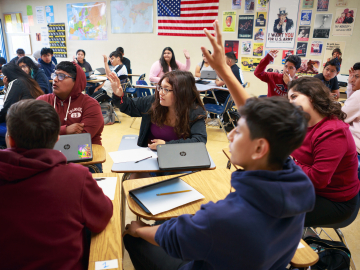
⟵ Go to all Research Stories
Get the Educator
Subscribe to our monthly newsletter.
Stanford Graduate School of Education
482 Galvez Mall Stanford, CA 94305-3096 Tel: (650) 723-2109
- Contact Admissions
- GSE Leadership
- Site Feedback
- Web Accessibility
- Career Resources
- Faculty Open Positions
- Explore Courses
- Academic Calendar
- Office of the Registrar
- Cubberley Library
- StanfordWho
- StanfordYou
Improving lives through learning

- Stanford Home
- Maps & Directions
- Search Stanford
- Emergency Info
- Terms of Use
- Non-Discrimination
- Accessibility
© Stanford University , Stanford , California 94305 .

IMAGES
VIDEO
COMMENTS
13.4 Annotated Student Sample: Research Log; 13.5 Research Process: Making Notes, Synthesizing Information, and Keeping a Research Log; 13.6 Spotlight on … Ethical Research ... or another like it, as a template for creating your own research notes and organizational tool. You will need to have a record of all field research data as well as ...
Background. 300 words maximum. Three paragraphs maximum. Paragraph 1-. Provide the context of the study- why is a phenomenon of interest in relation to health service delivery or health outcomes in your region of interest. Provide recent background literature evidence on the research phenomenon.
Research note is the main article type of BMC Research Notes and is suitable for. Extensions or updates to previously published research. The reporting of additional controls. Short descriptions of research projects that did not provide publishable results but represent valuable information regarding protocol and data collection.
Notes that are disorganized will make it more difficult for you to interpret the data. Be descriptive. Use descriptive words to document what you observe. For example, instead of noting that a classroom appears "comfortable," state that the classroom includes soft lighting and cushioned chairs that can be moved around by the students.
Taking Notes Electronically. Make sure your device is charged and backed up to store data. Invest in note-taking apps or E-Ink tablets. If using your laptop, create folders to organize your notes and data. Create shortcuts to your folders so you have easier access. Create outlines. Keep your notes short and legible.
Research proposal examples. Writing a research proposal can be quite challenging, but a good starting point could be to look at some examples. ... To finish your proposal on a strong note, explore the potential implications of your research for your field. Emphasize again what you aim to contribute and why it matters. For example, your results ...
Taking and Organizing Notes for Research Papers Why take notes? Note taking is the transcription of information using shortening techniques to create an outside memory source. Students take notes to record information and to aid in comprehension and reflection. Note taking is an essential part of writing any research paper because they give you a
Research: Context and Conversation. Julia Phillippi 1 and Jana Lauderdale 1. Abstract. Field notes are widely recommended in qualitative research as a means of documenting needed contextual ...
Things to keep in mind when considering using either endnotes or footnotes in your research paper:. 1. Footnotes are numbered consecutively throughout a research paper, except for those notes accompanying special material (e.g., figures, tables, charts, etc.). Numbering of footnotes are "superscript"--Arabic numbers typed slightly above the line of text.
Note making (as opposed to note taking) is an active practice of recording relevant parts of reading for your research as well as your reflections and critiques of those studies. Note making, therefore, is a pre-writing exercise that helps you to organise your thoughts prior to writing. In this module, we will cover:
How to Take Notes and Document Sources. Note taking is a very important part of the research process. It will help you: keep your ideas and sources organized; effectively use the information you find; avoid plagiarism; When you find good information to be used in your paper:
Examples of literature reviews. Step 1 - Search for relevant literature. Step 2 - Evaluate and select sources. Step 3 - Identify themes, debates, and gaps. Step 4 - Outline your literature review's structure. Step 5 - Write your literature review.
METHOD 2: Cornell Notes. Divide a piece of paper into three sections. The large box to the right is for writing notes. Your key points can be translated into the main ideas of each of your body paragraphs. Skip a line between ideas and topics. Use point form. Use abbreviations whenever possible.
Research Notes can be as short as a single-figure paper. In such cases, all that is required is a short Introduction describing the question or hypothesis that led to the presented figure, followed by a description of the Methods used. ... Line art: Examples of line art include graphs, diagrams, flow charts and phylogenetic trees. Please make ...
The Craft of Research, Third Edition addresses notetaking in a section called "Recording What You Find" (pp. 95-100). Below is a summary of the system outlined in the book. Take full notes. Whether you take notes on cards, in a notebook, or on the computer, it's vital to record information accurately and completely.
9. Research Notes and Report; 10. Sample Research Note Template; 11. Sample Research Note; What is a Research Note? How to Write a Research Note 1. Identify your research goals and objectives; 2. Select your preferred note-taking methods and strategies; 3. Use abbreviations, acronyms, initialism, or phrases; 4. Create some sketchnotes or visual ...
How Notes Sheets eliminate possible note-taking problems: Problem #1: Students write too much information on a card Notes Sheet Solution: Each space on the sheet is only big enough for one fact or quote. Problem #2: Students fill out cards just to meet teacher requirements (i.e. "you must have 50 note cards for your paper") without thinking about the usefulness of the information or its ...
Qualitative Research Methodology. This is a research methodology that involves the collection and analysis of non-numerical data such as words, images, and observations. This type of research is often used to explore complex phenomena, to gain an in-depth understanding of a particular topic, and to generate hypotheses.
Research Authors. This part of the research note must contain the names of the authors that have given an important contribution during the research process.It should also indicate their corresponding roles during the research. Their affiliation information (such as e-mail addresses) may also be provided. Title. As it states, the research note should also contain the title of the research ...
Step 1: Consider your aims and approach. Step 2: Choose a type of research design. Step 3: Identify your population and sampling method. Step 4: Choose your data collection methods. Step 5: Plan your data collection procedures. Step 6: Decide on your data analysis strategies. Other interesting articles.
Historically, "scratch notes" or field notes have been a central component of qualitative research since the early 1900s, originating in the field of ethnographic anthropology (Emerson, Fretz, & Shaw, 2011).Notable anthropologists, including Cushing, Boas, Malinowski, and Mead, developed a style for what are now considered field notes (Ottenberg, 1990).
May 18, 2024. The methods section of a literature review example is like a map for your research journey. By explaining the methods used to identify sources and analyze data, it helps readers understand why and how you arrived at your conclusions. This section is critical for establishing the credibility and reliability of your work.
The number of people experiencing poor health and early death caused by metabolism-related risk factors such as high blood pressure, high blood sugar, and high BMI has increased by 50% since 2000, reveals new global study. Last updated. May 16, 2024. News release.
The 3D map covers a volume of about one cubic millimetre, one-millionth of a whole brain, and contains roughly 57,000 cells and 150 million synapses — the connections between neurons. It ...
Set them the challenge of writing their own discussion piece on a topic using all the techniques outlined by Leah. You could also use the detailed explanation of writing in the 1st, 2nd and 3rd ...
Here, using an agnostic, hybrid-capture sequencing approach, we report the detection of H5N1 in wastewater in nine Texas cities, with a total catchment area population in the millions, over a two-month period from March 4 th to April 25 th, 2024. Sequencing reads uniquely aligning to H5N1 covered all eight genome segments, with best alignments ...
The laborious process of tracing out our thoughts, letter by letter, on the page is becoming a relic of the past in our screen-dominated world, where text messages and thumb-typed grocery lists ...
As the nation prepares to mark the 70th anniversary of the landmark U.S. Supreme Court ruling in Brown v. Board of Education, a new report from researchers at Stanford and USC shows that racial and economic segregation among schools has grown steadily in large school districts over the past three decades — an increase that appears to be driven in part by policies favoring
Examples: Let's say you are a researcher in the United States, working on a national study. People from a variety of racial and ethnic backgrounds, including Native Americans, African Americans, Caucasians, Hispanics, and Asians, may be included in your sample. These people may also represent various geographic areas of the nation.
To analyze data collected in a statistically valid manner (e.g. from experiments, surveys, and observations). Meta-analysis. Quantitative. To statistically analyze the results of a large collection of studies. Can only be applied to studies that collected data in a statistically valid manner.